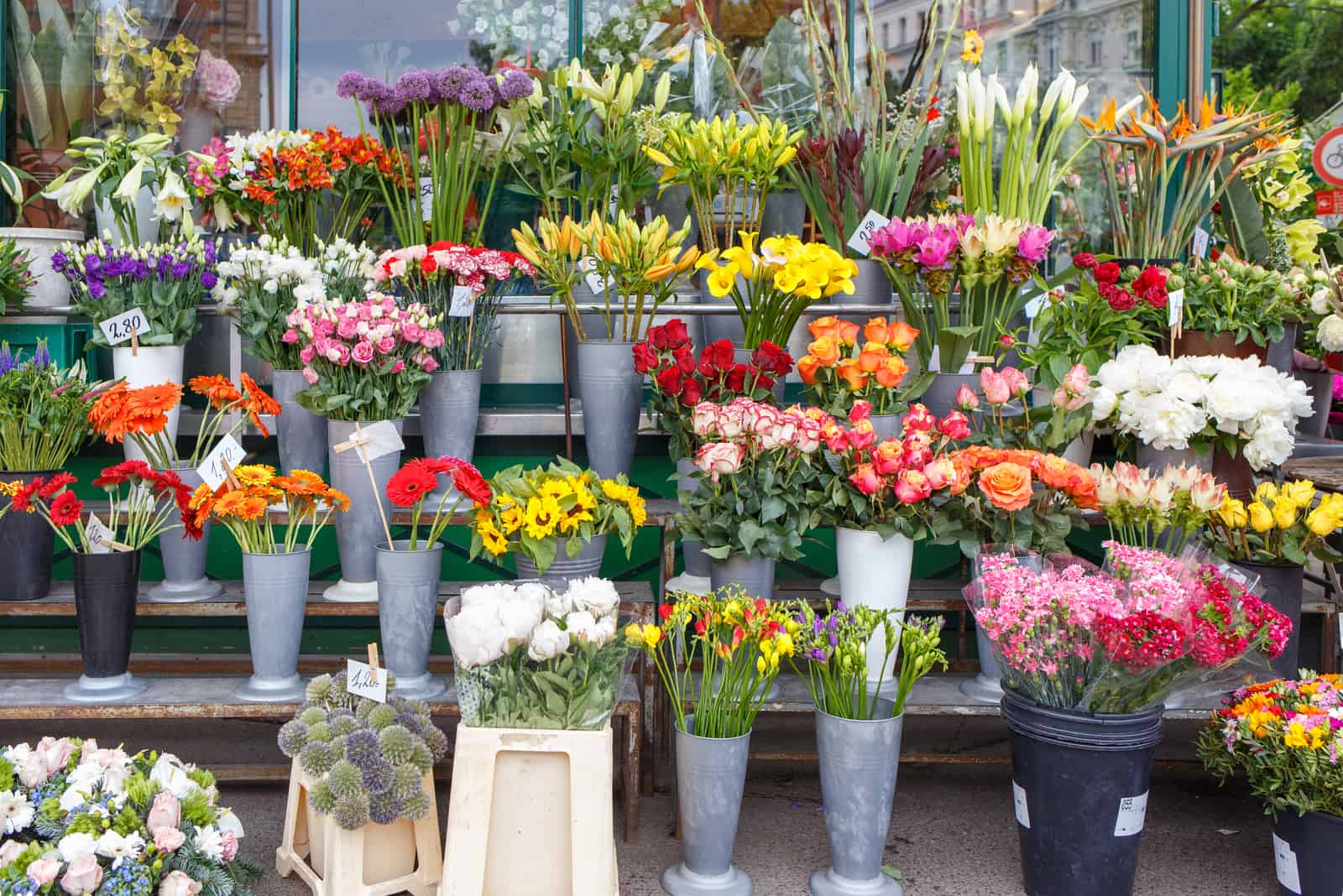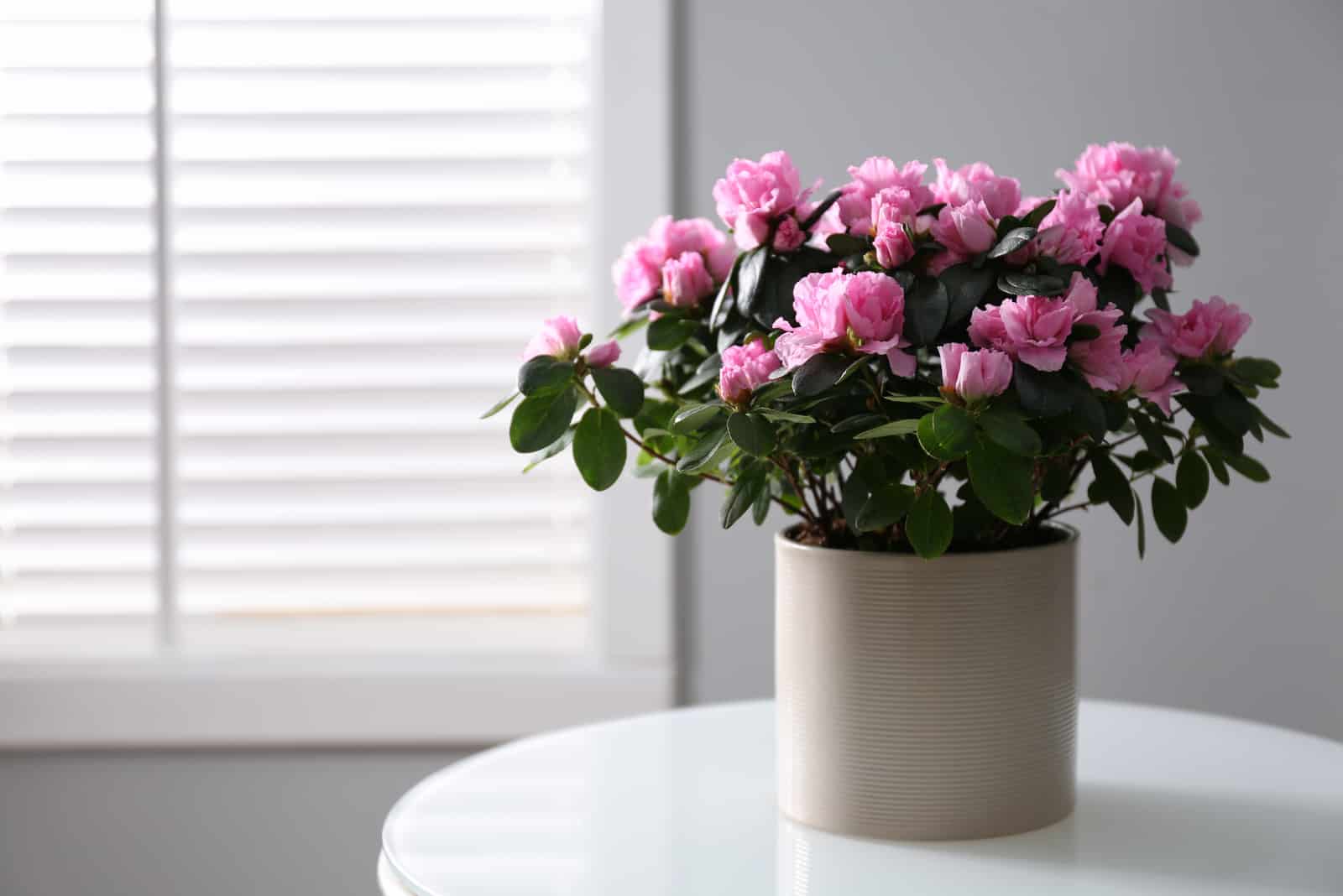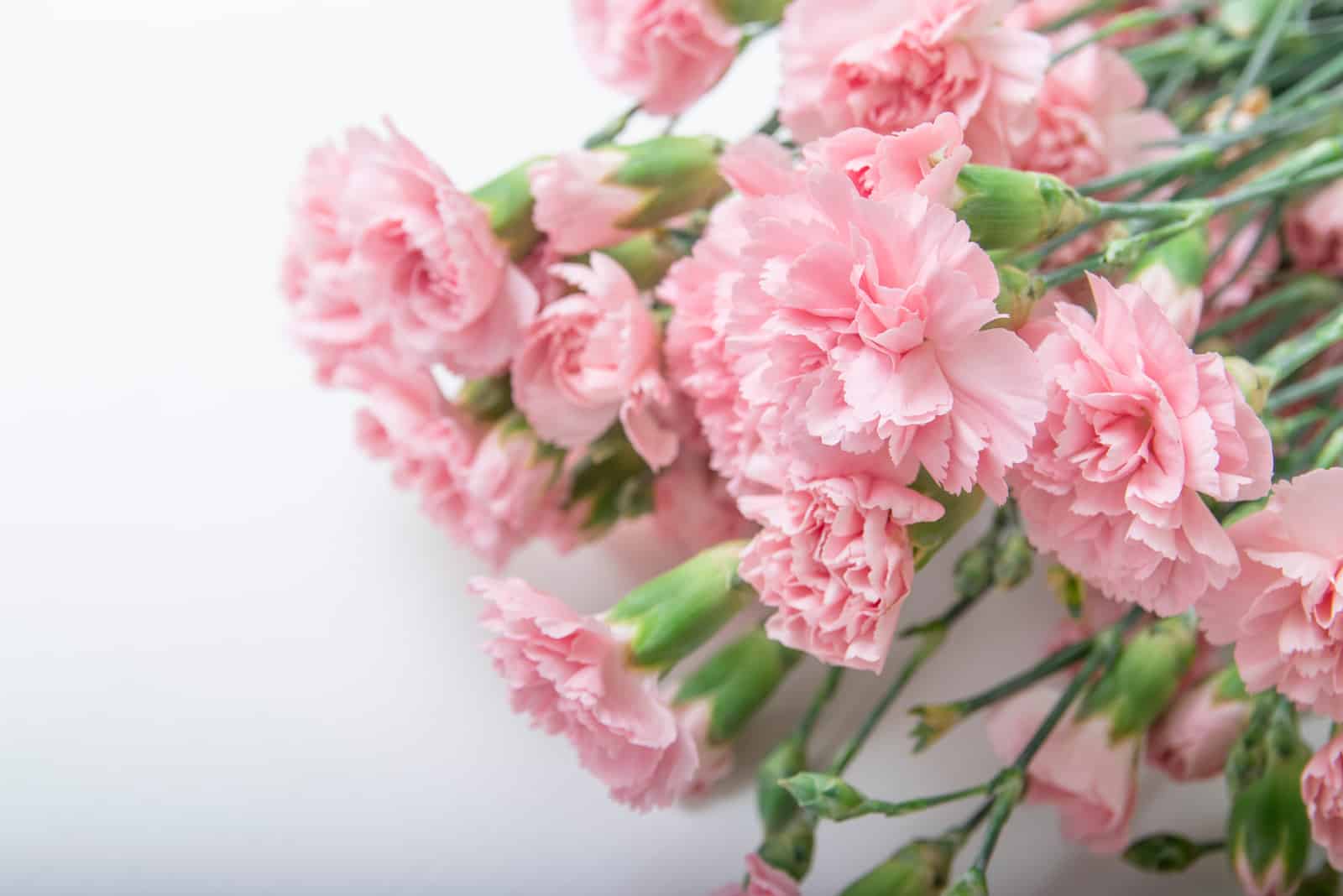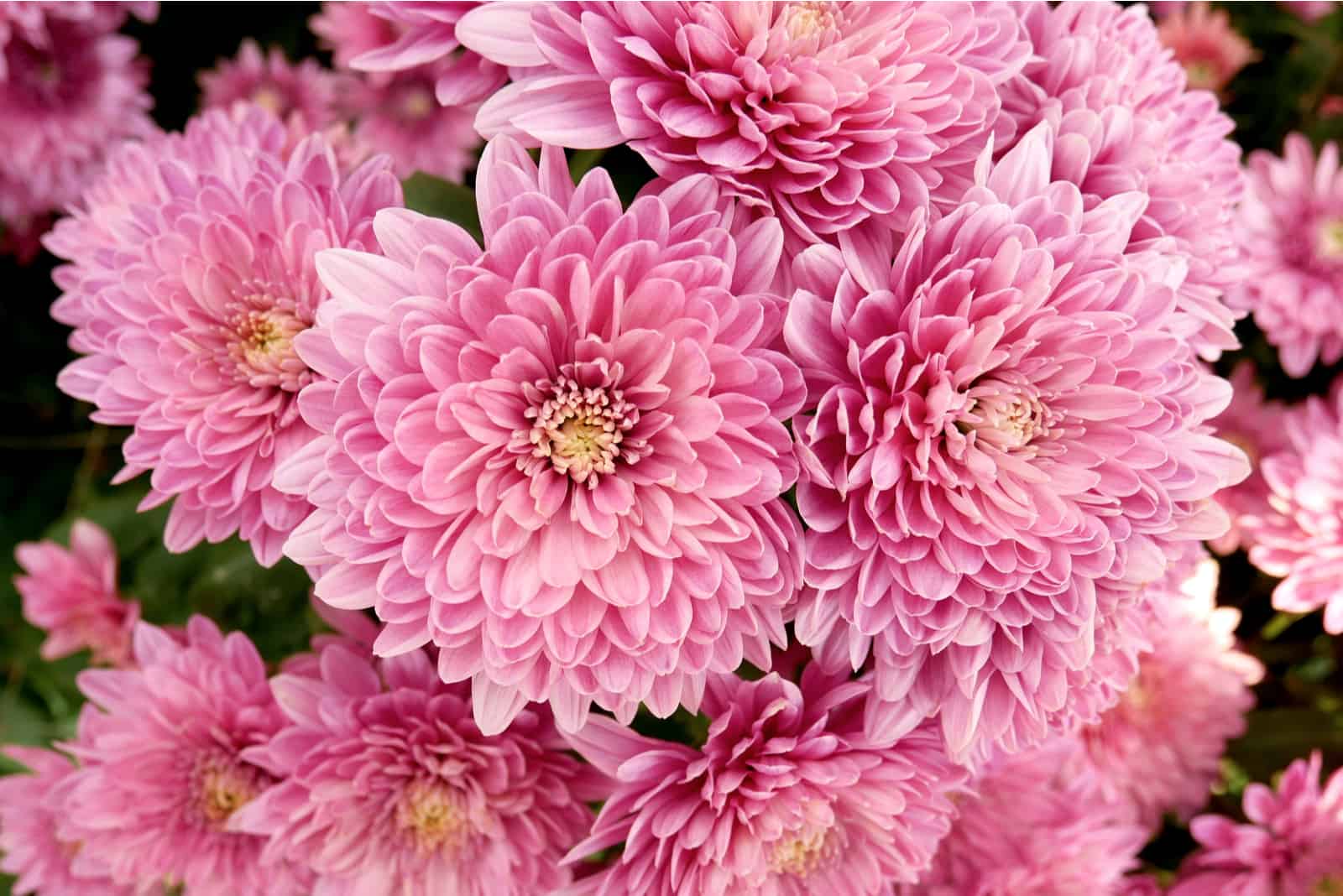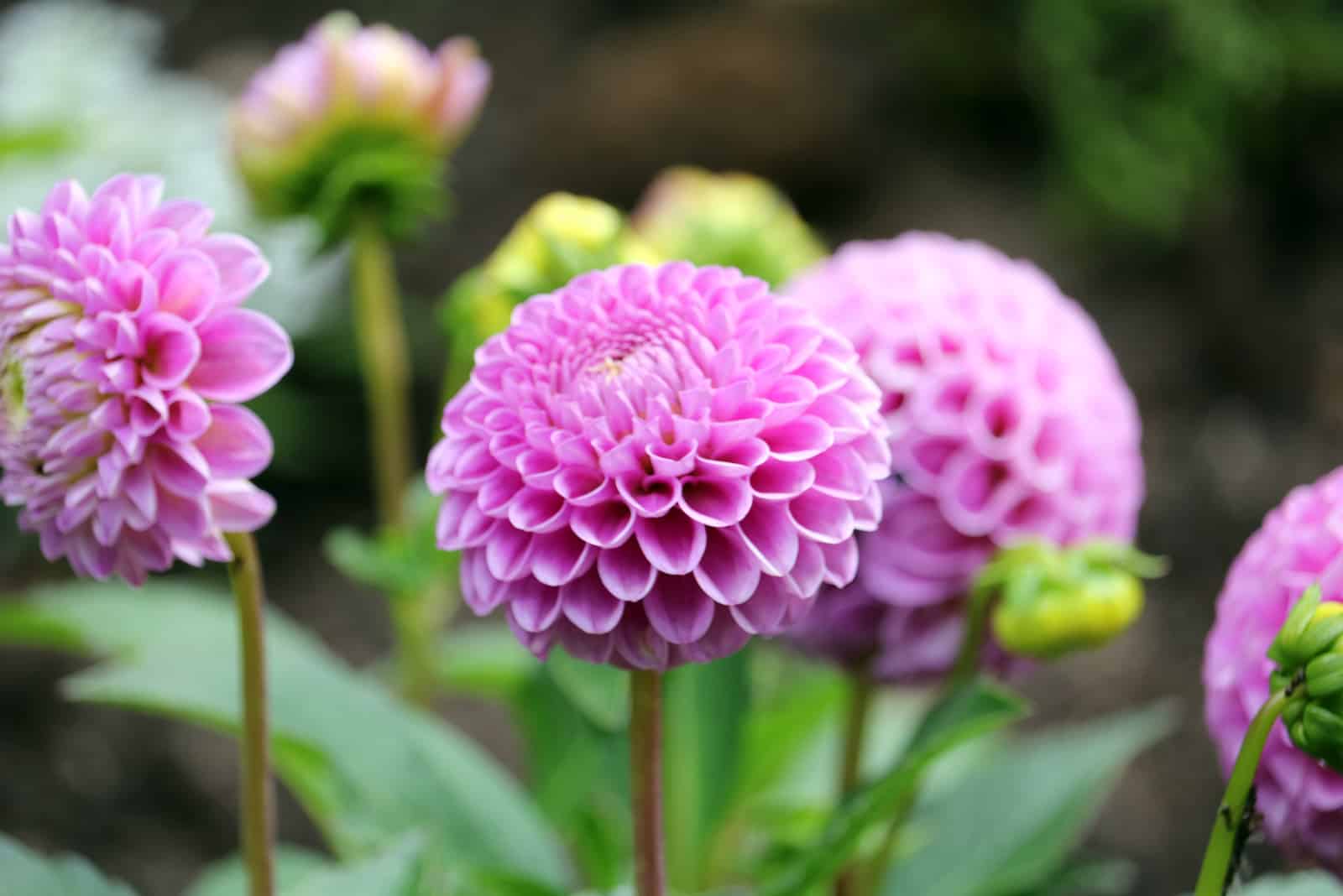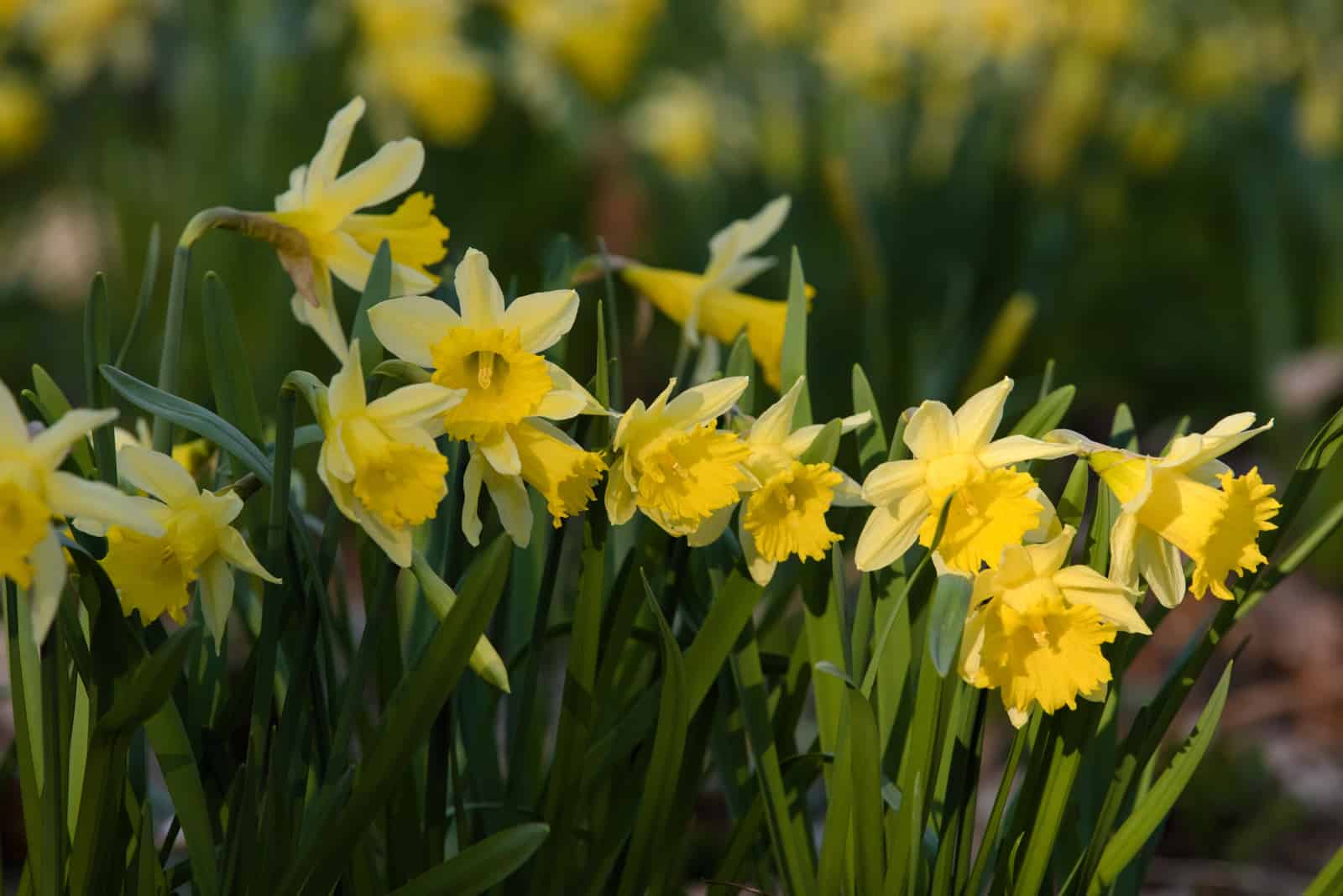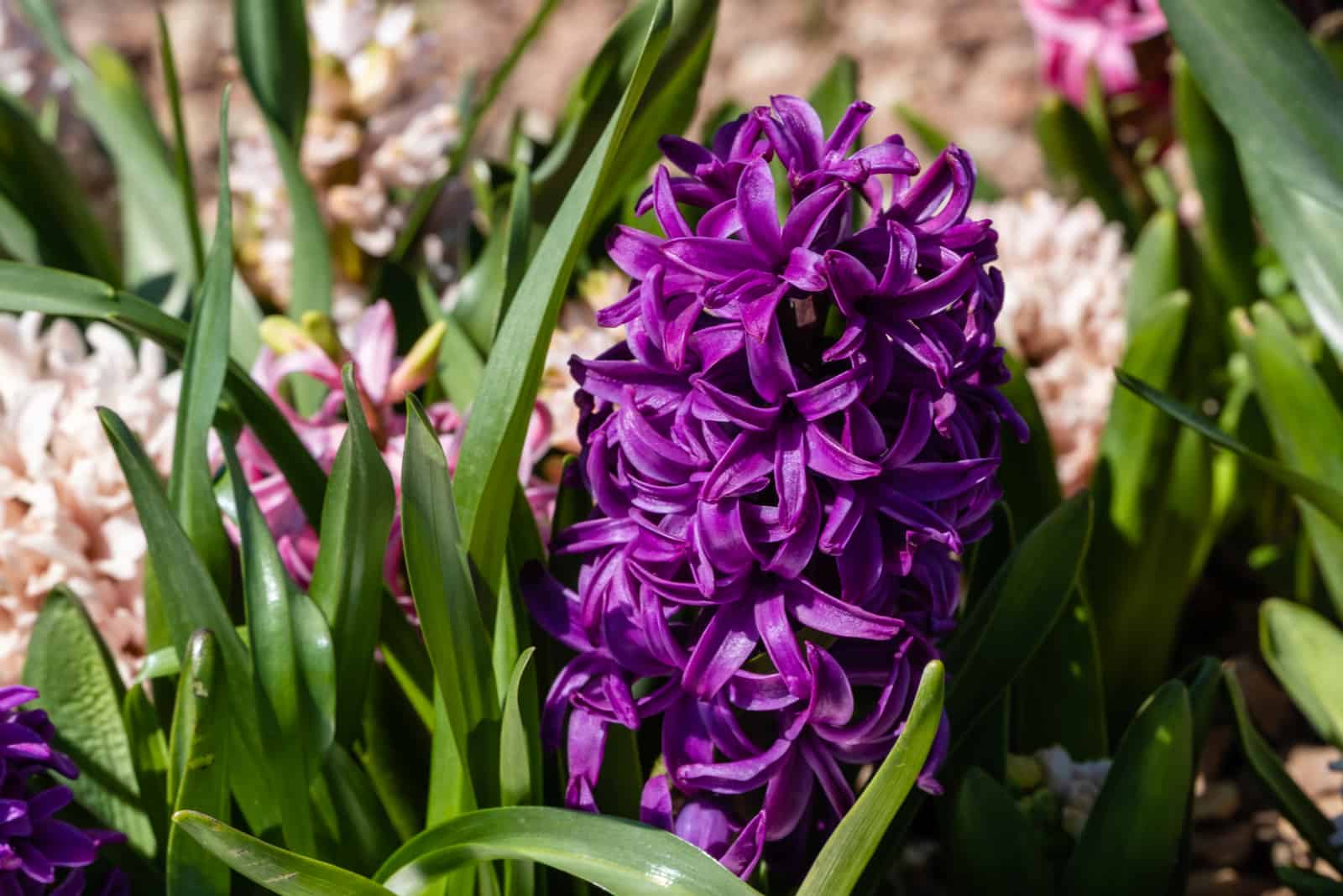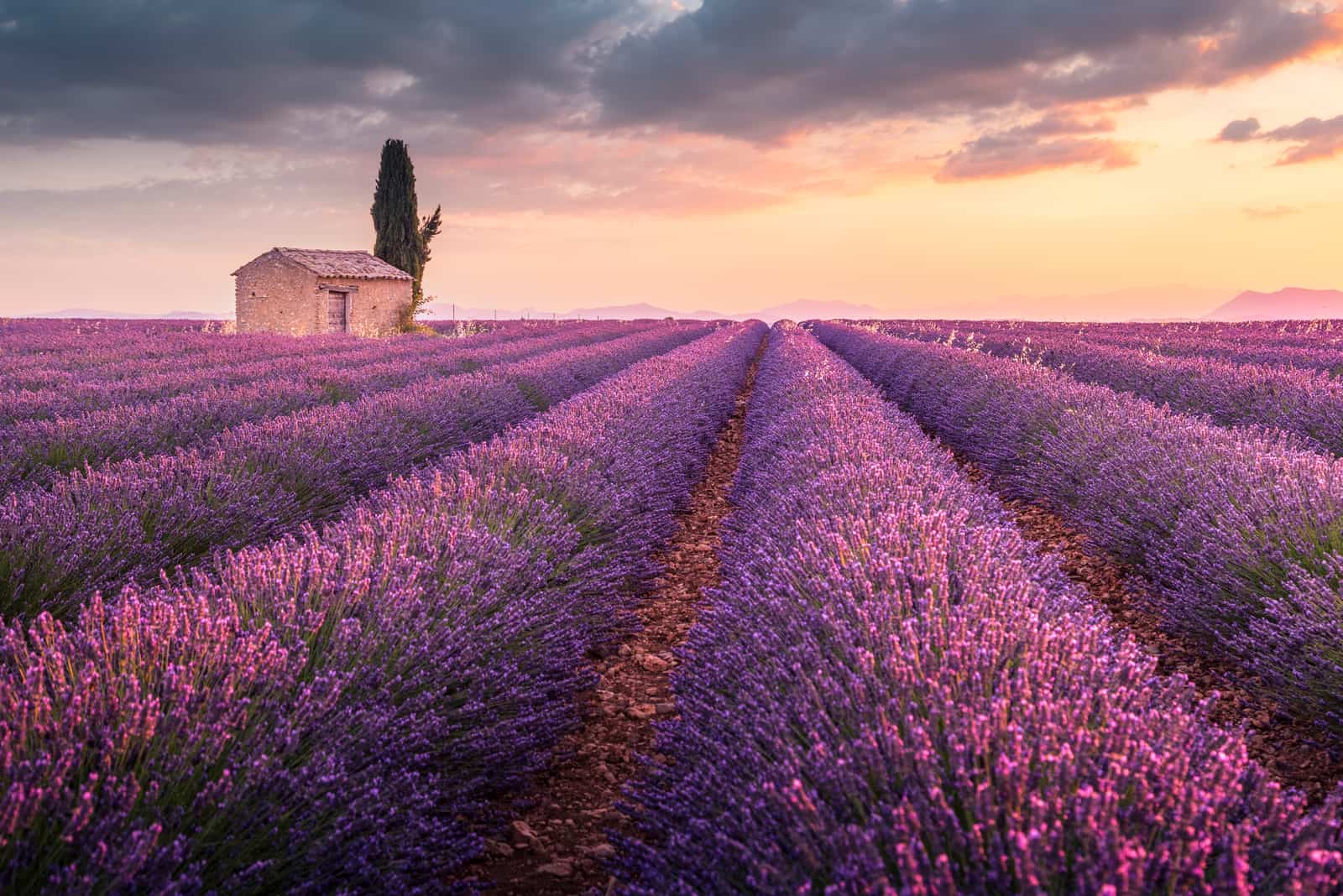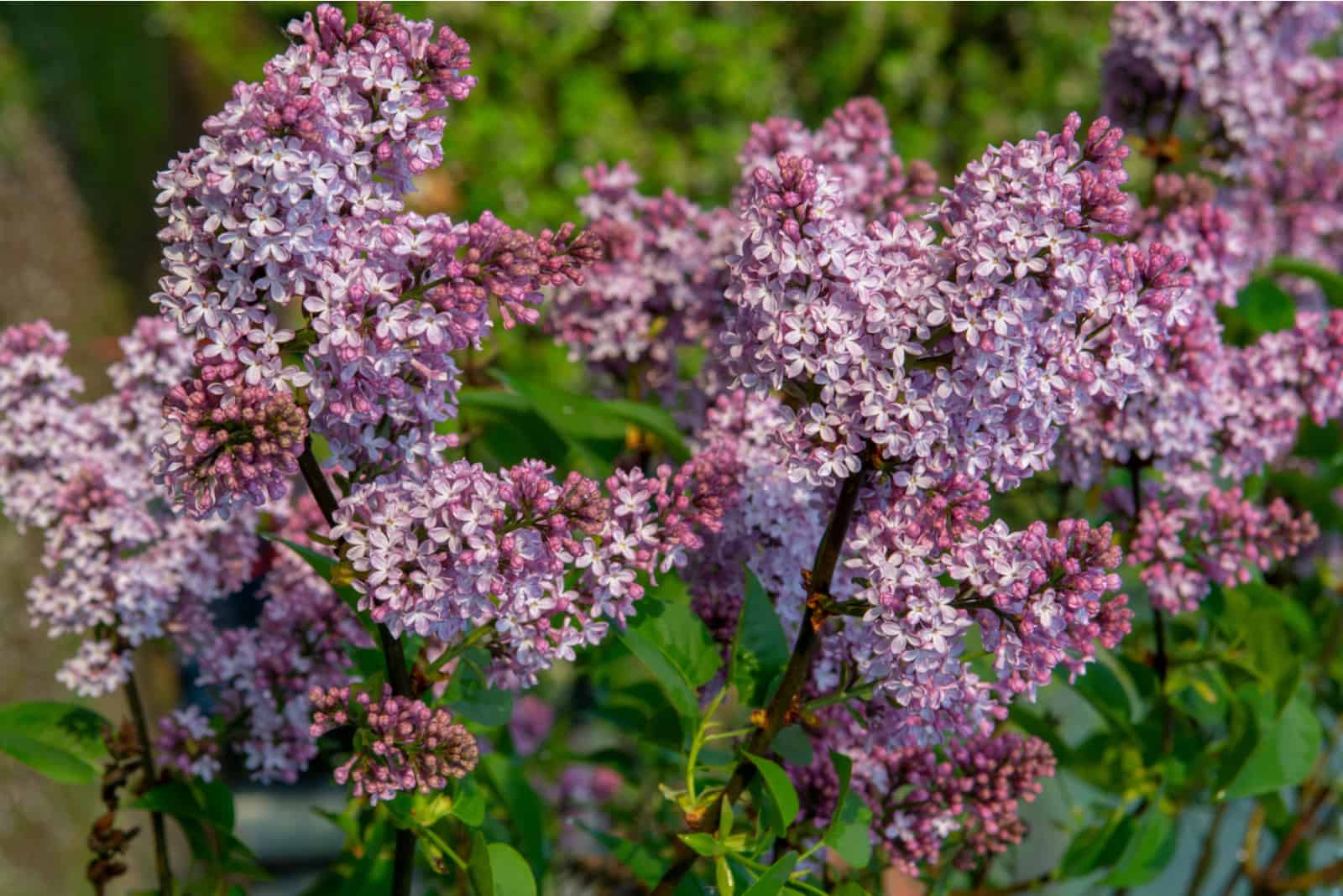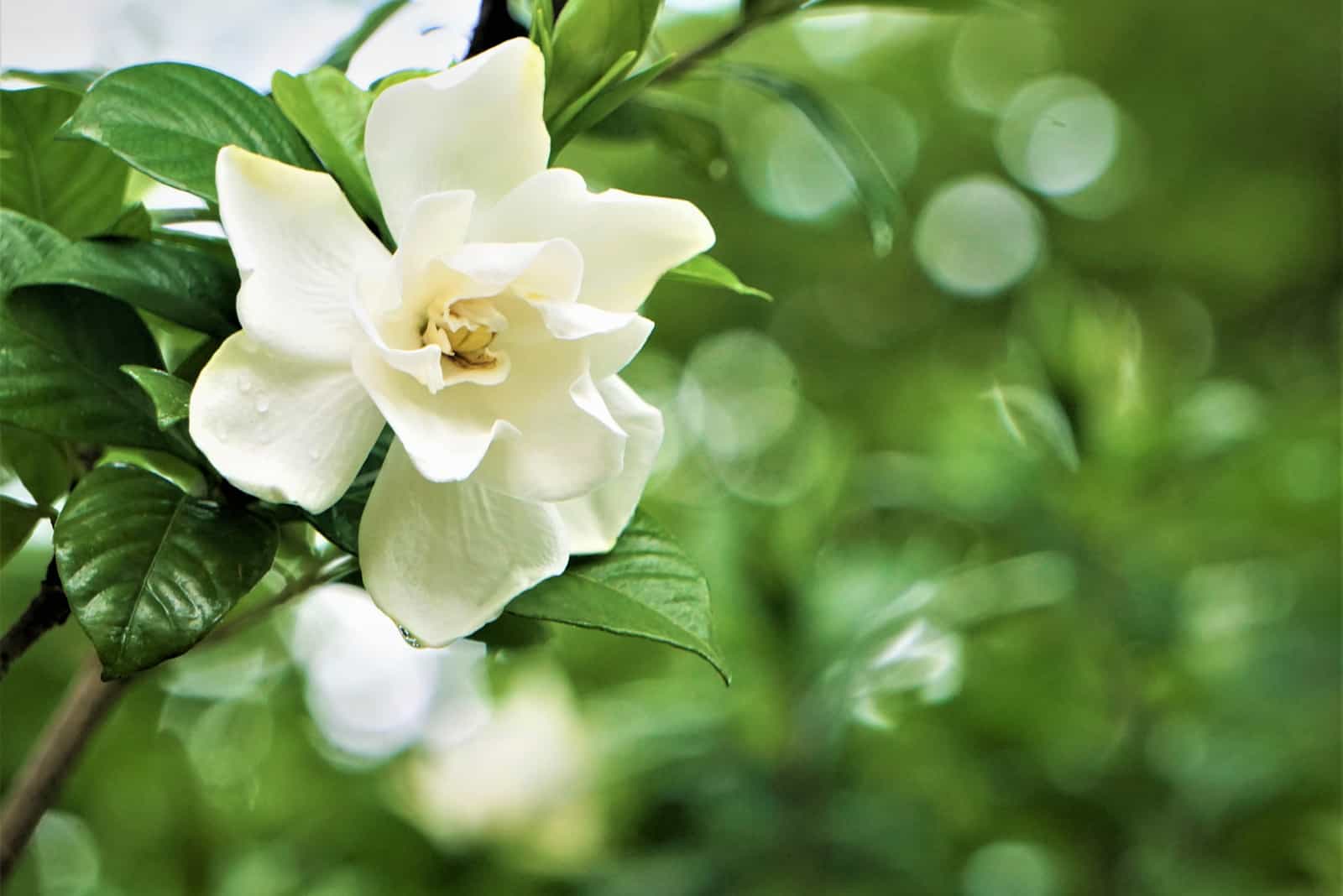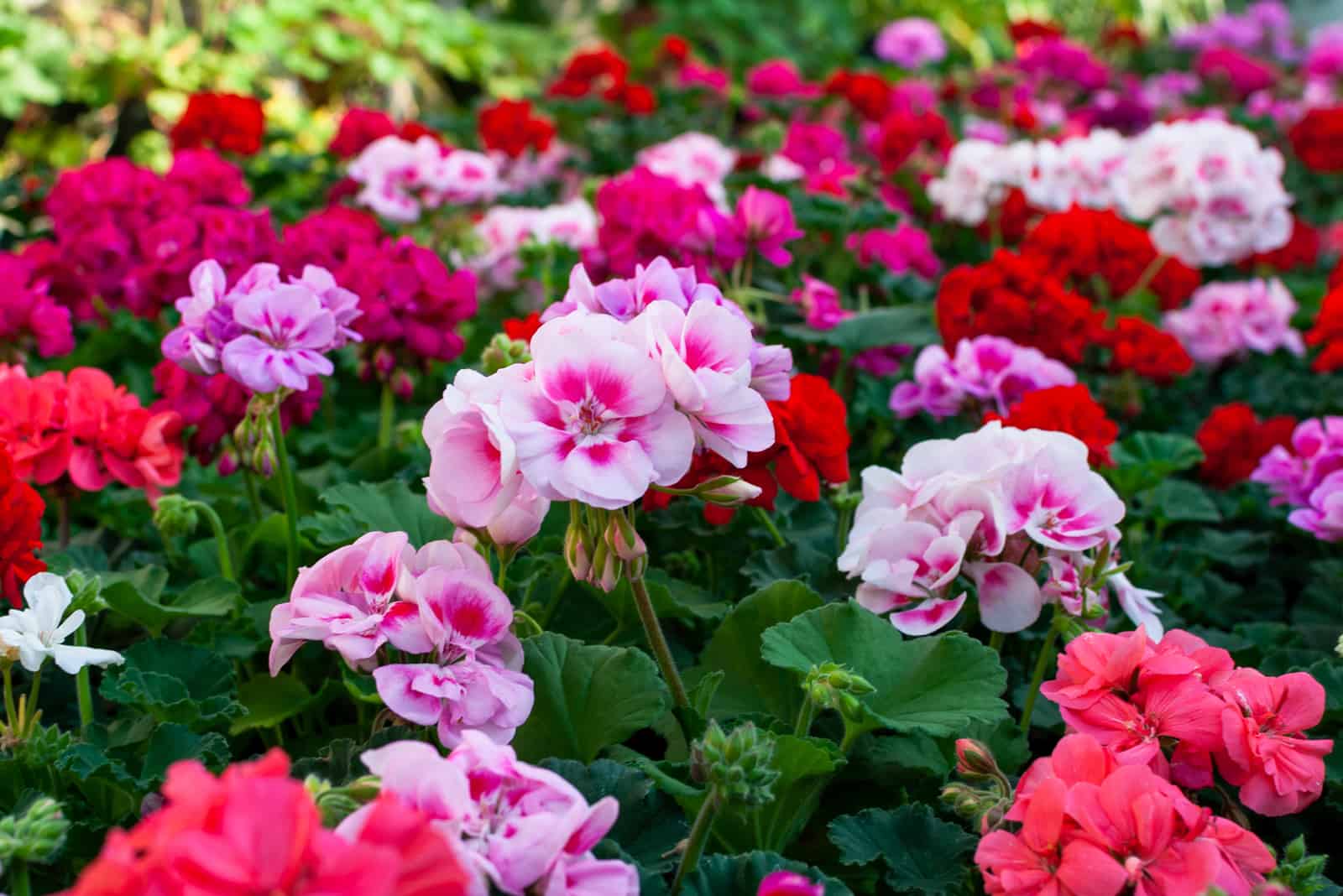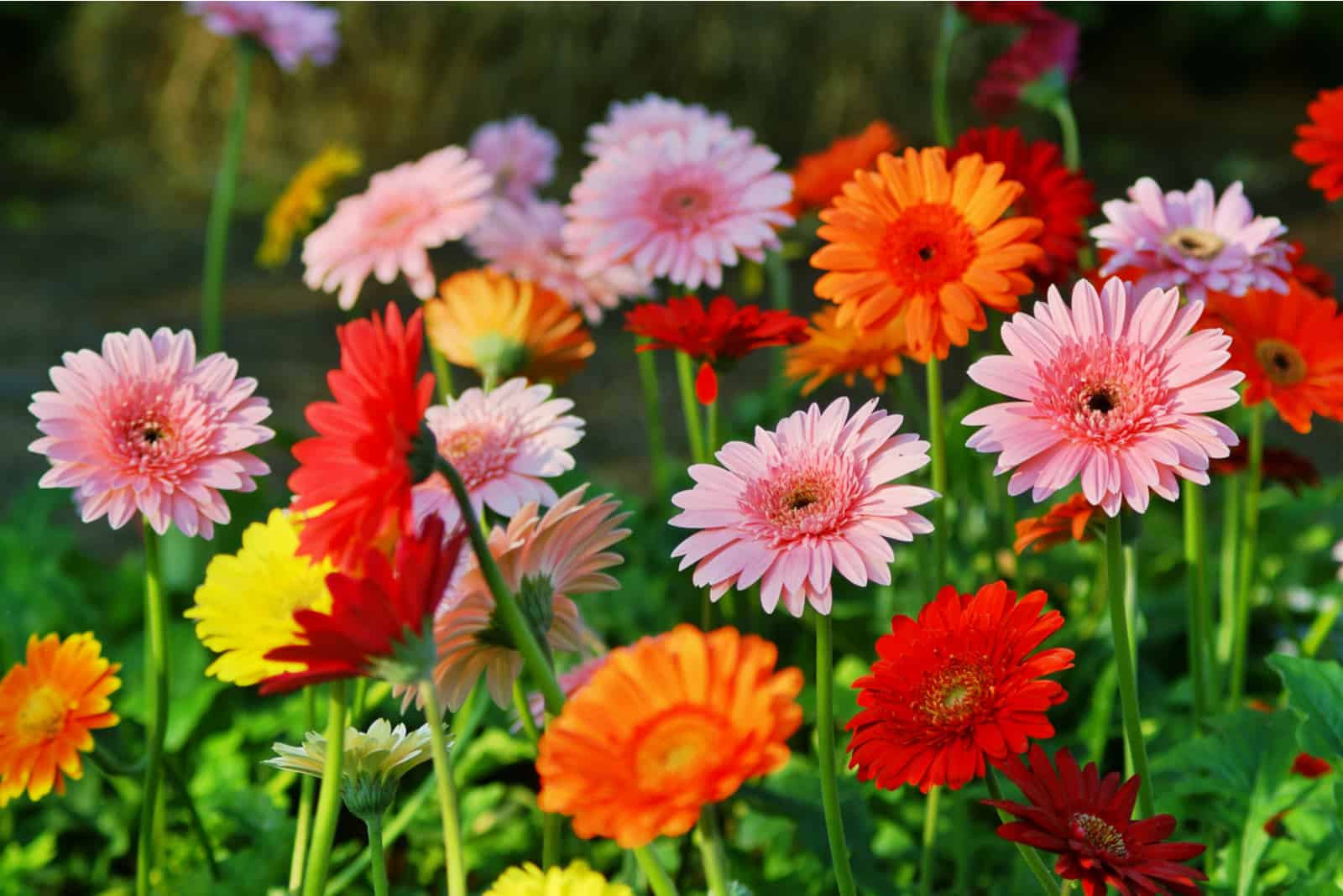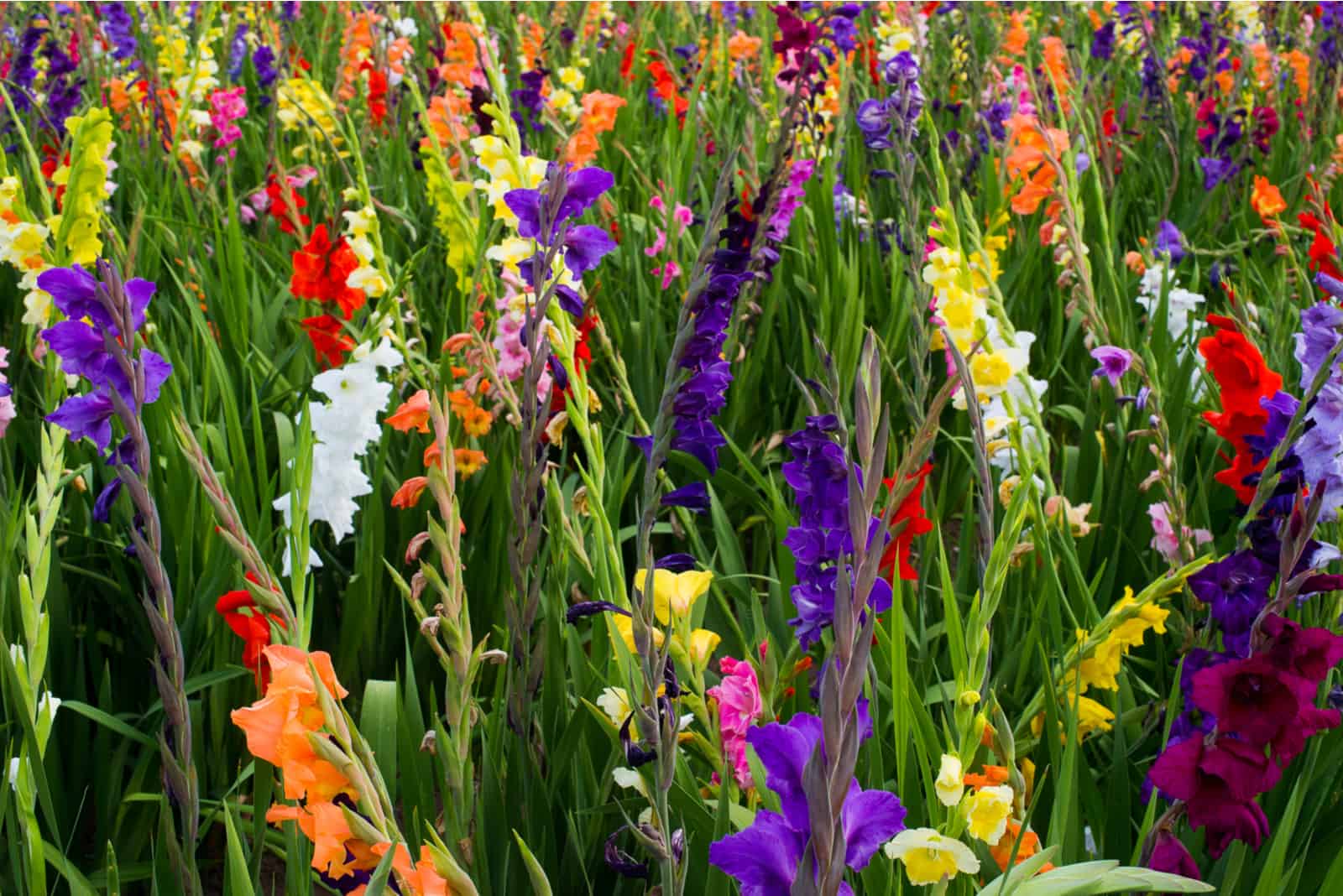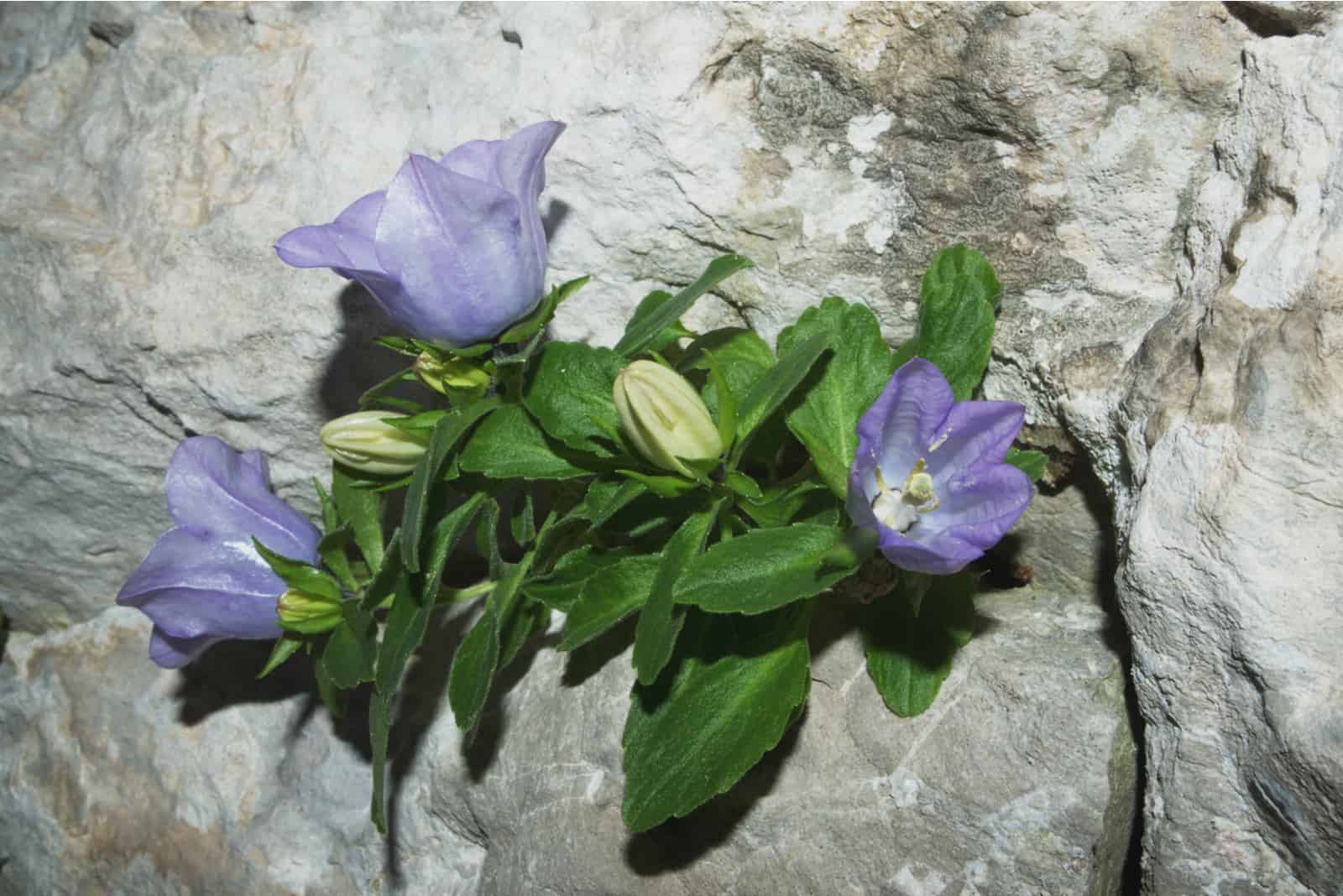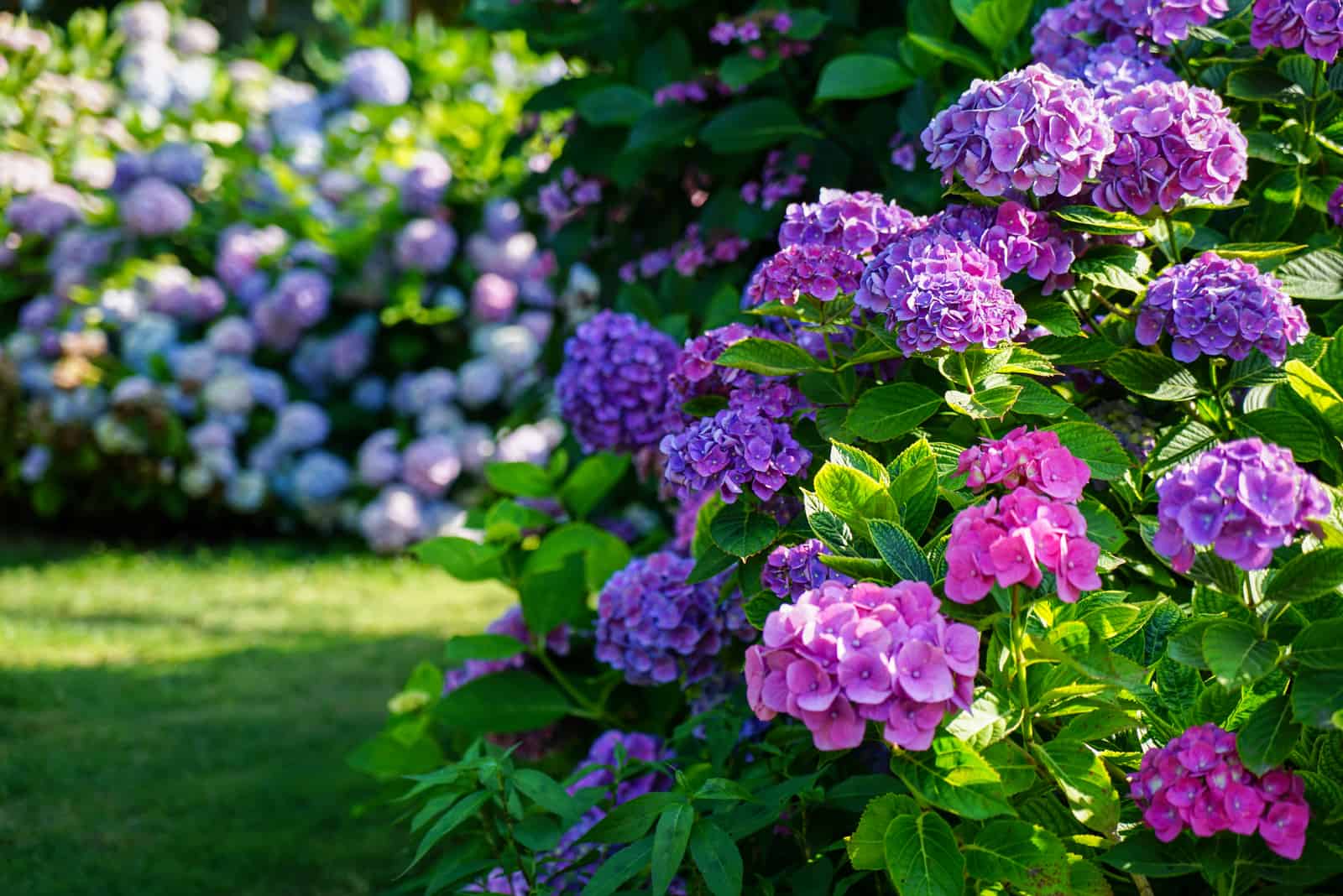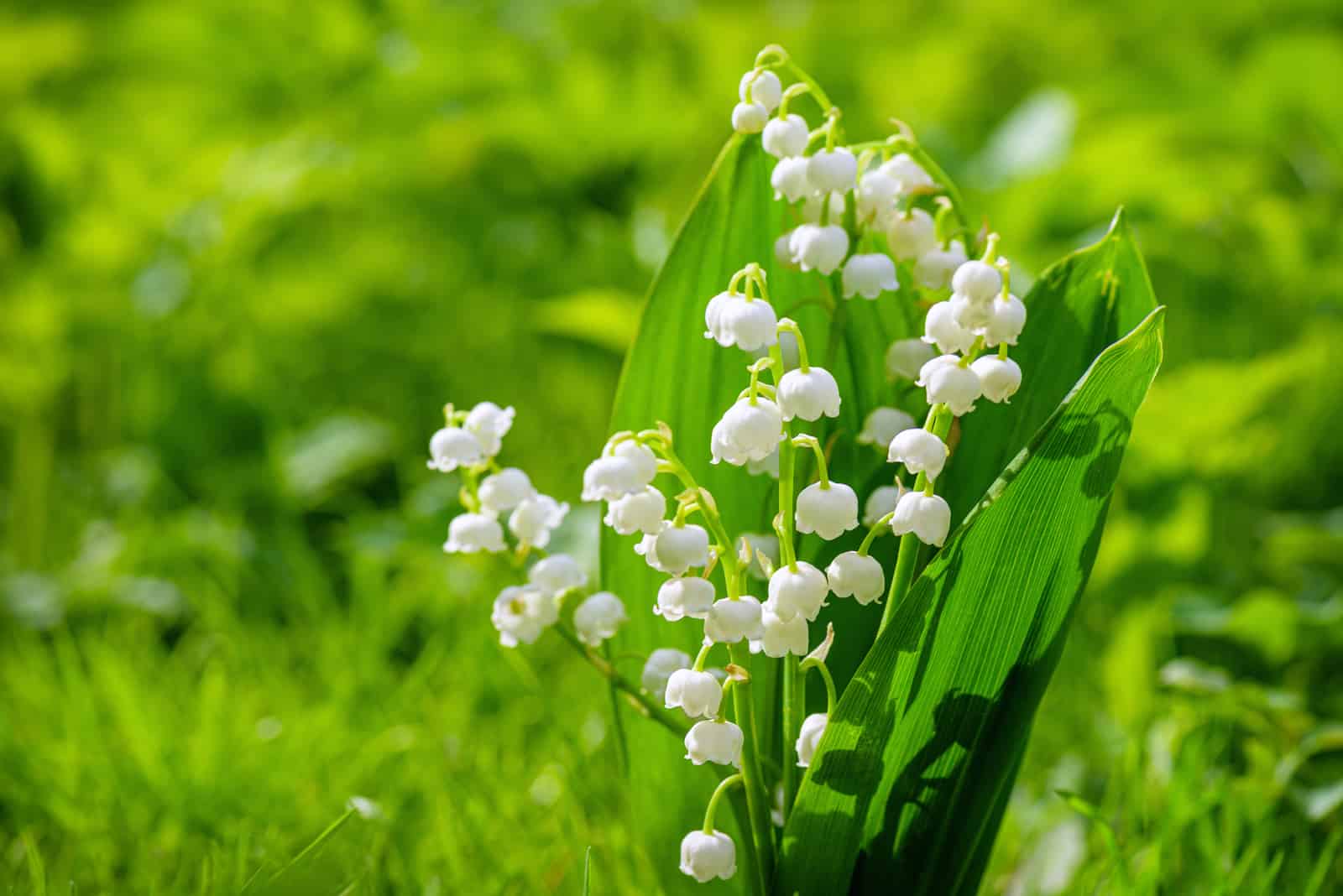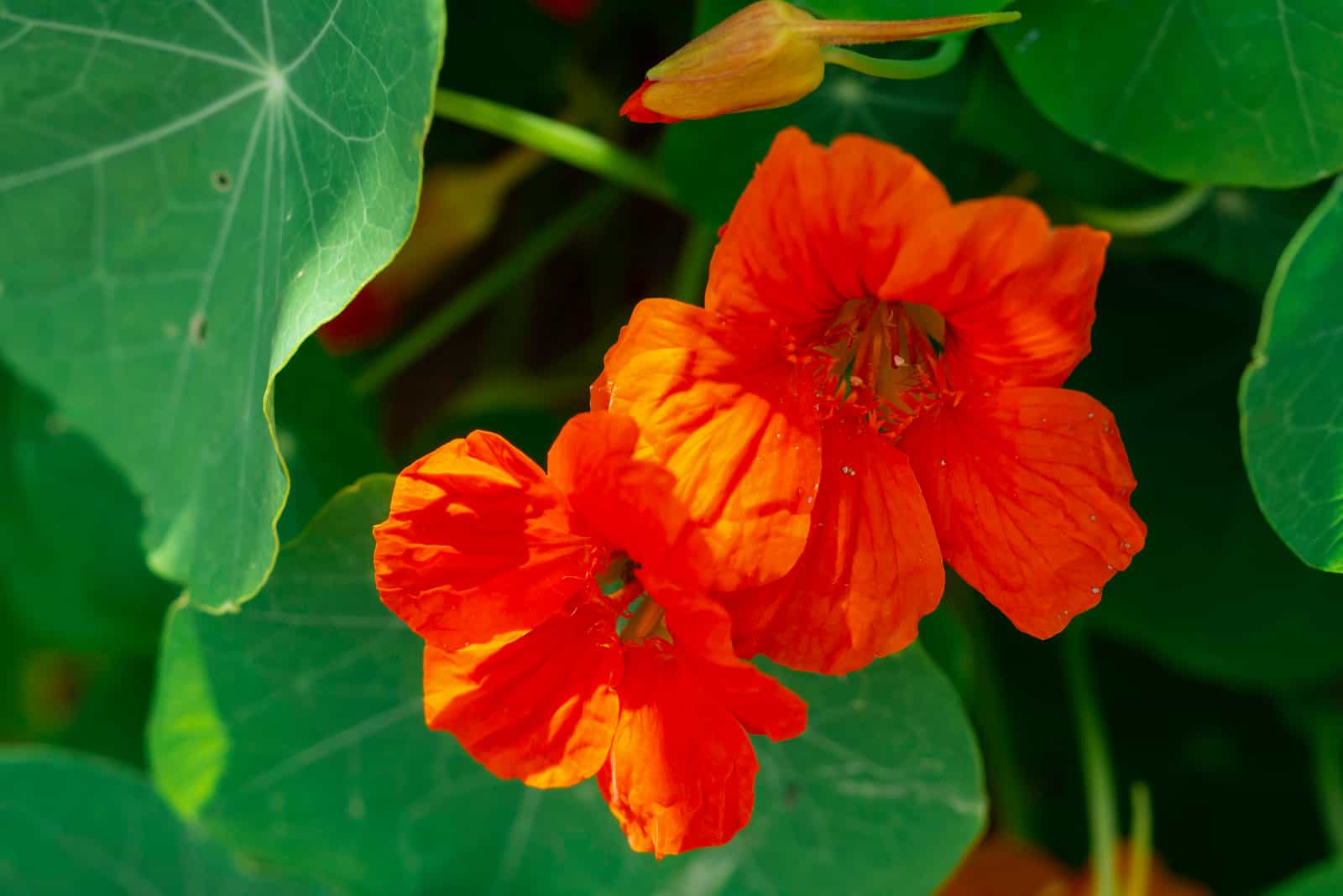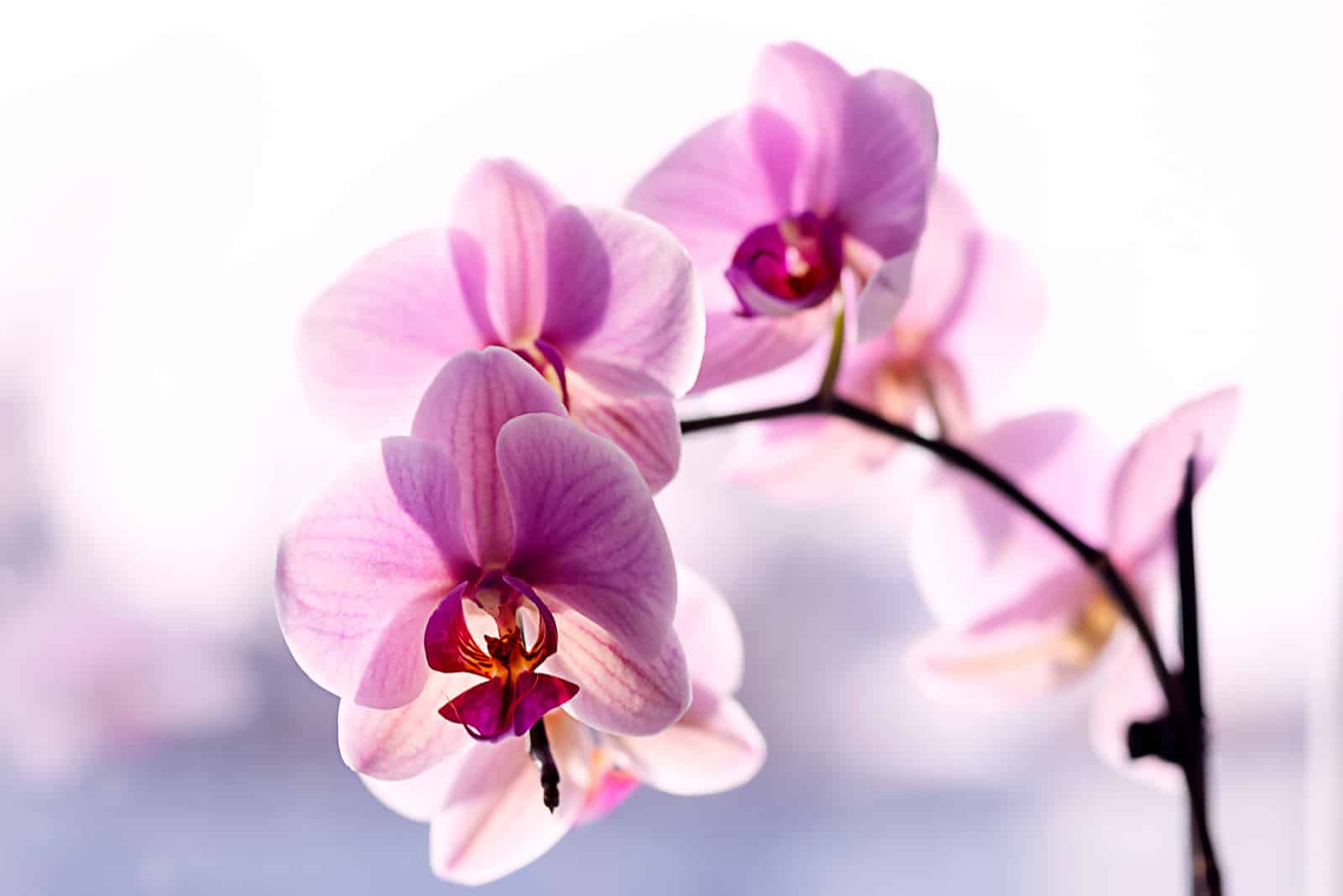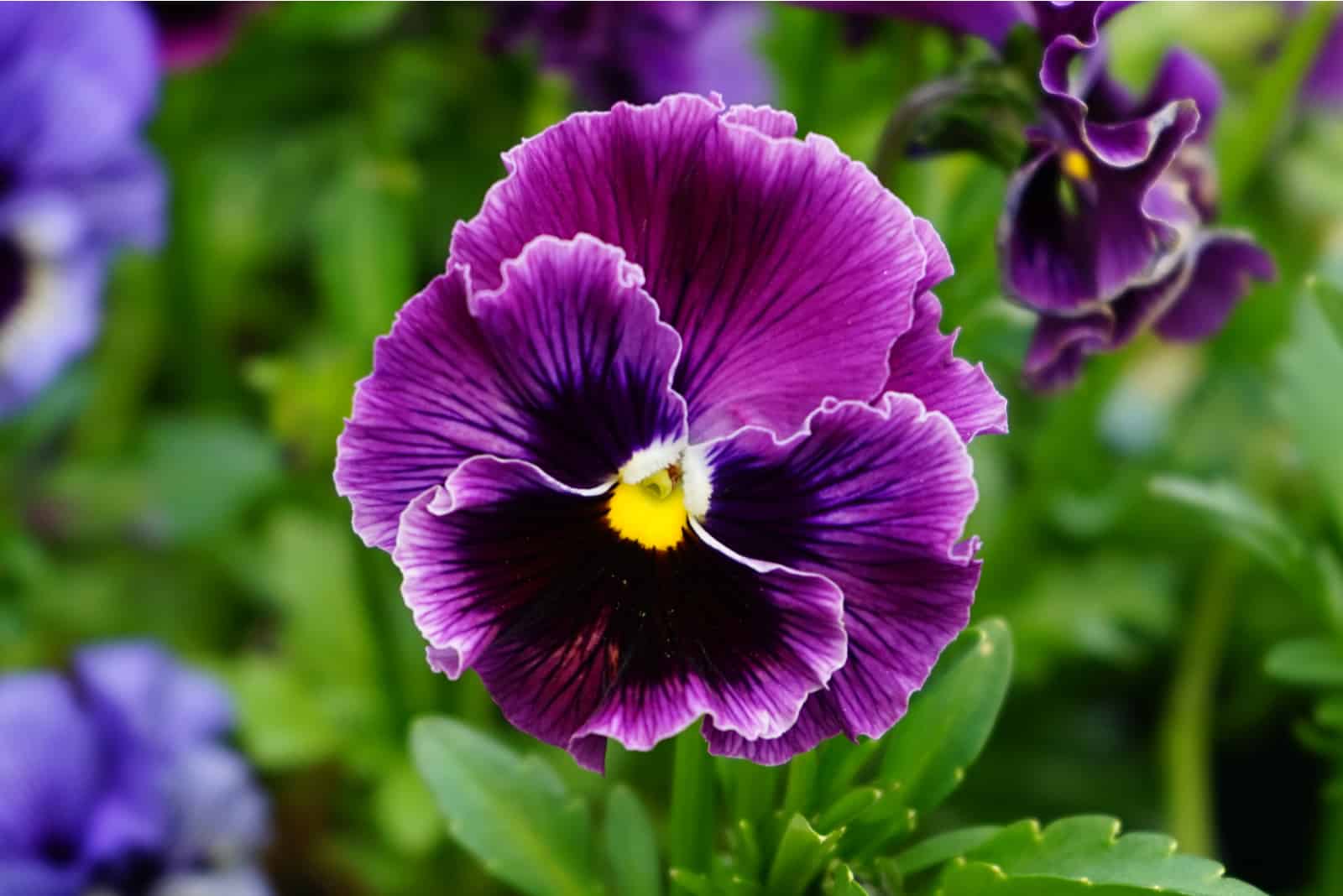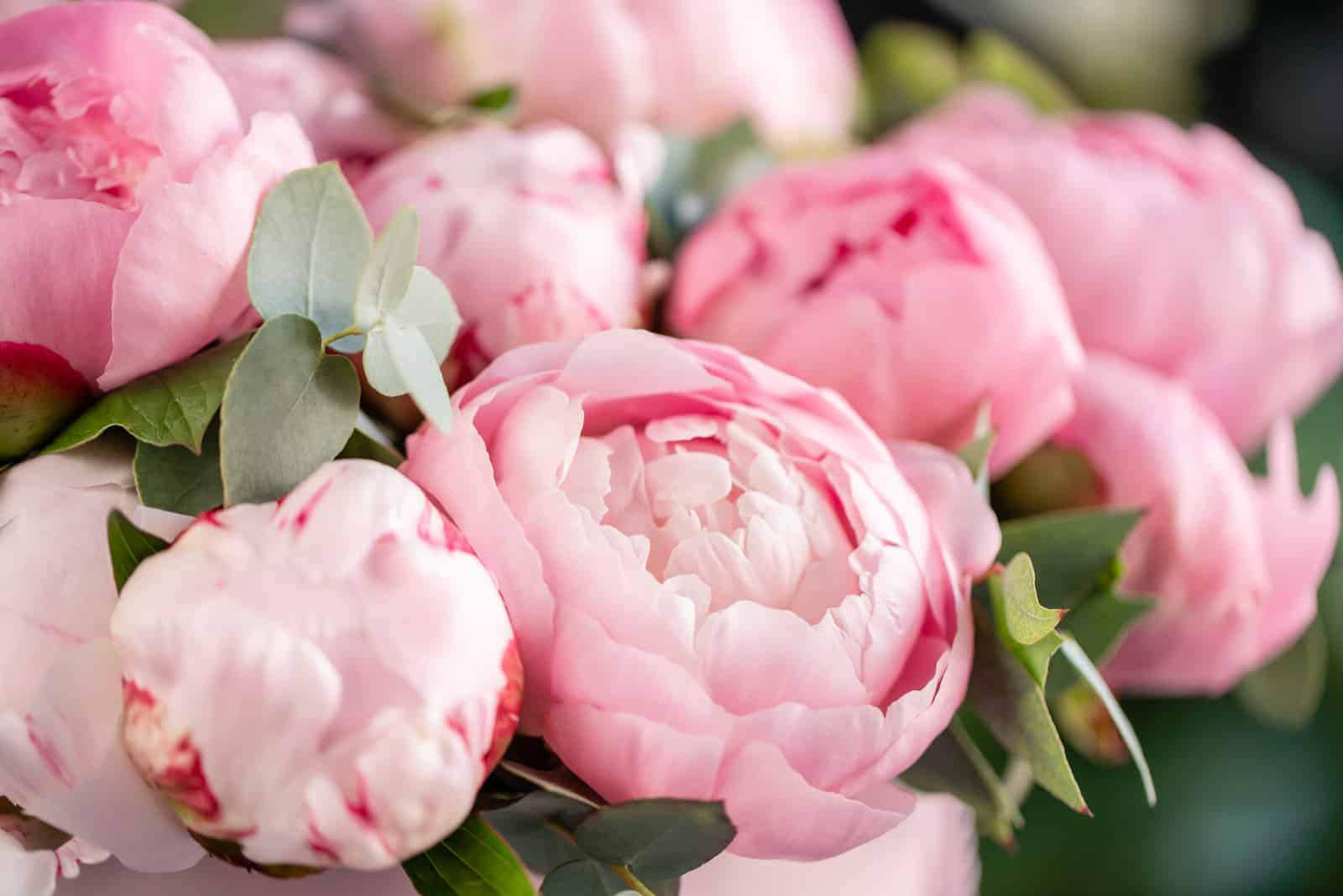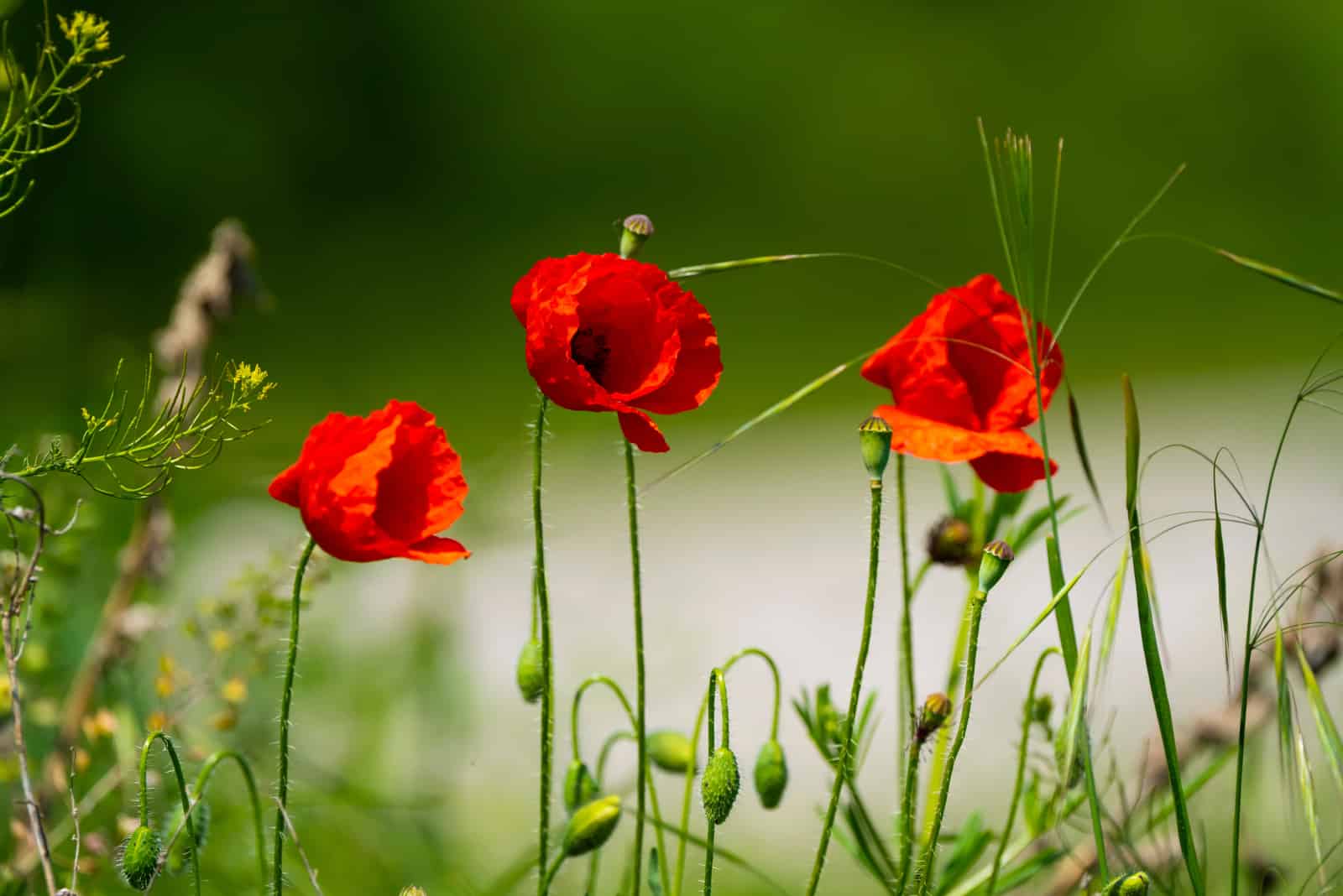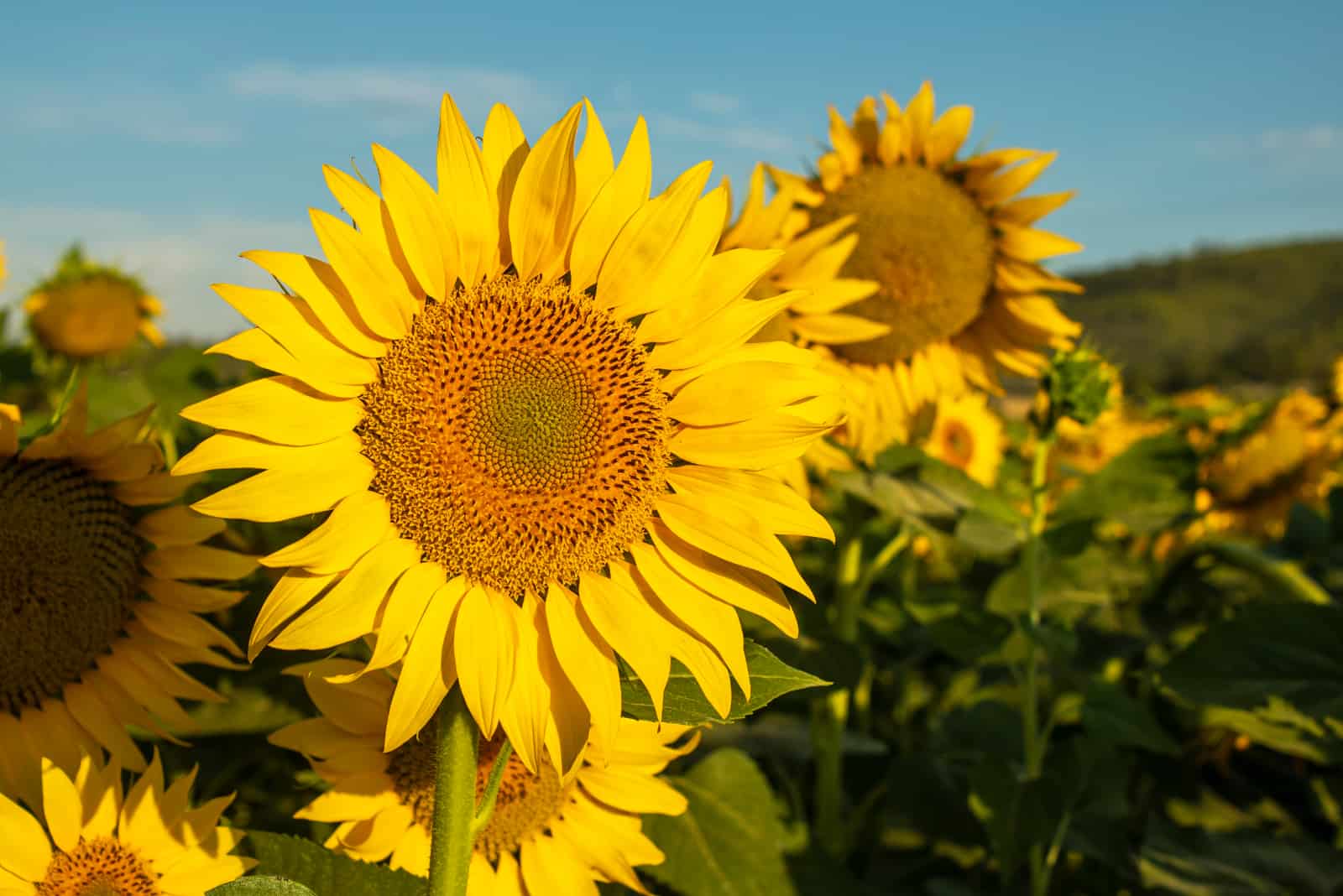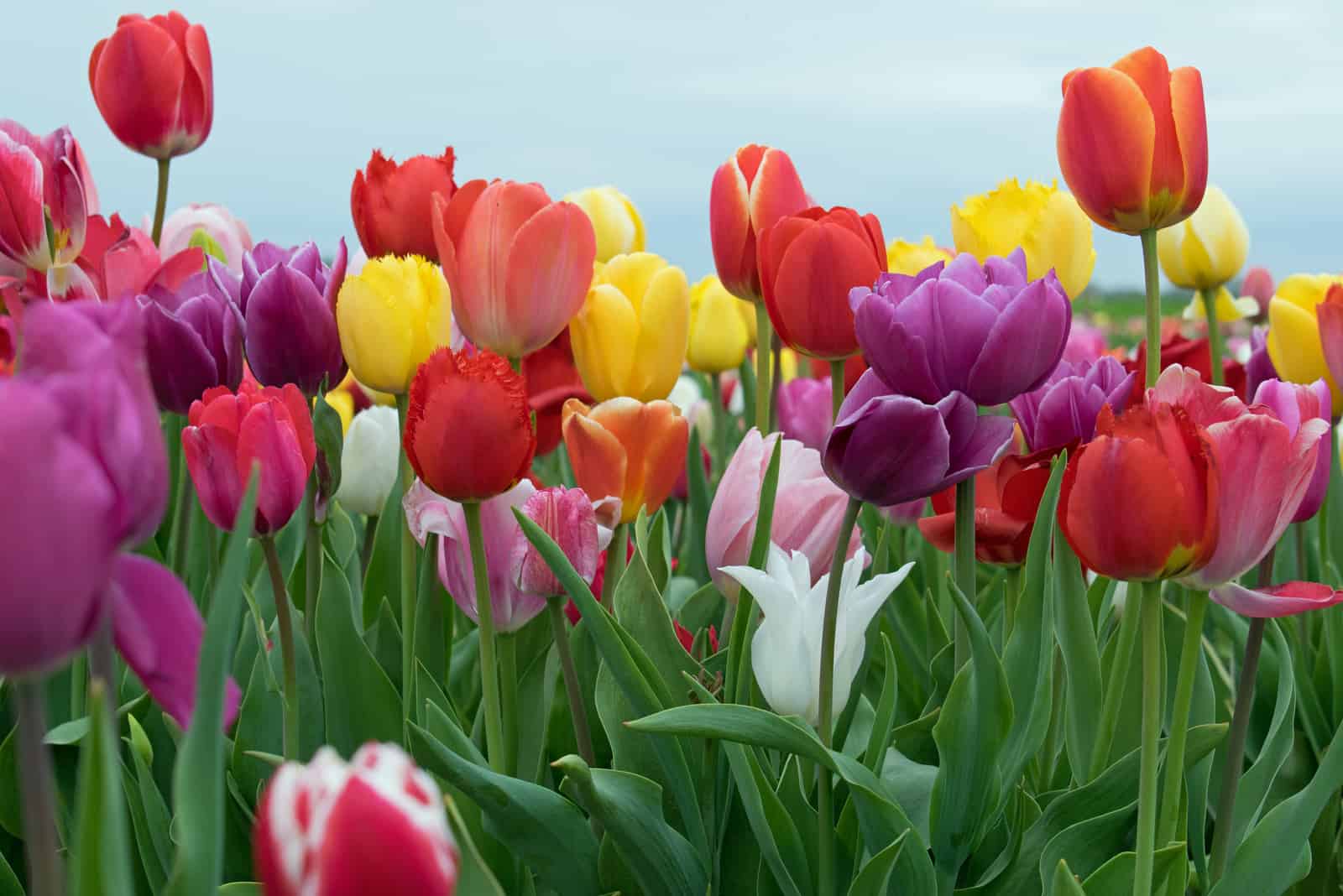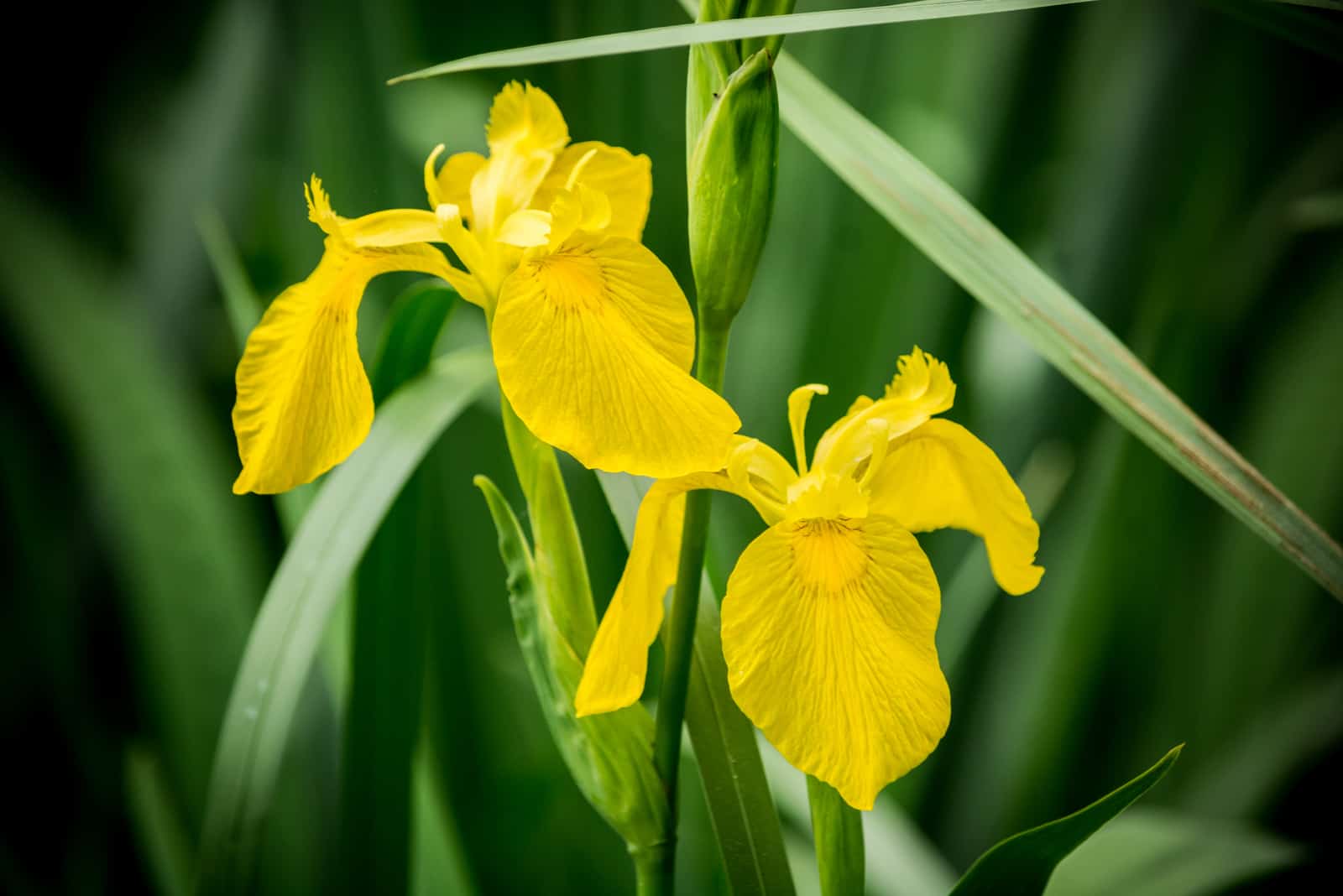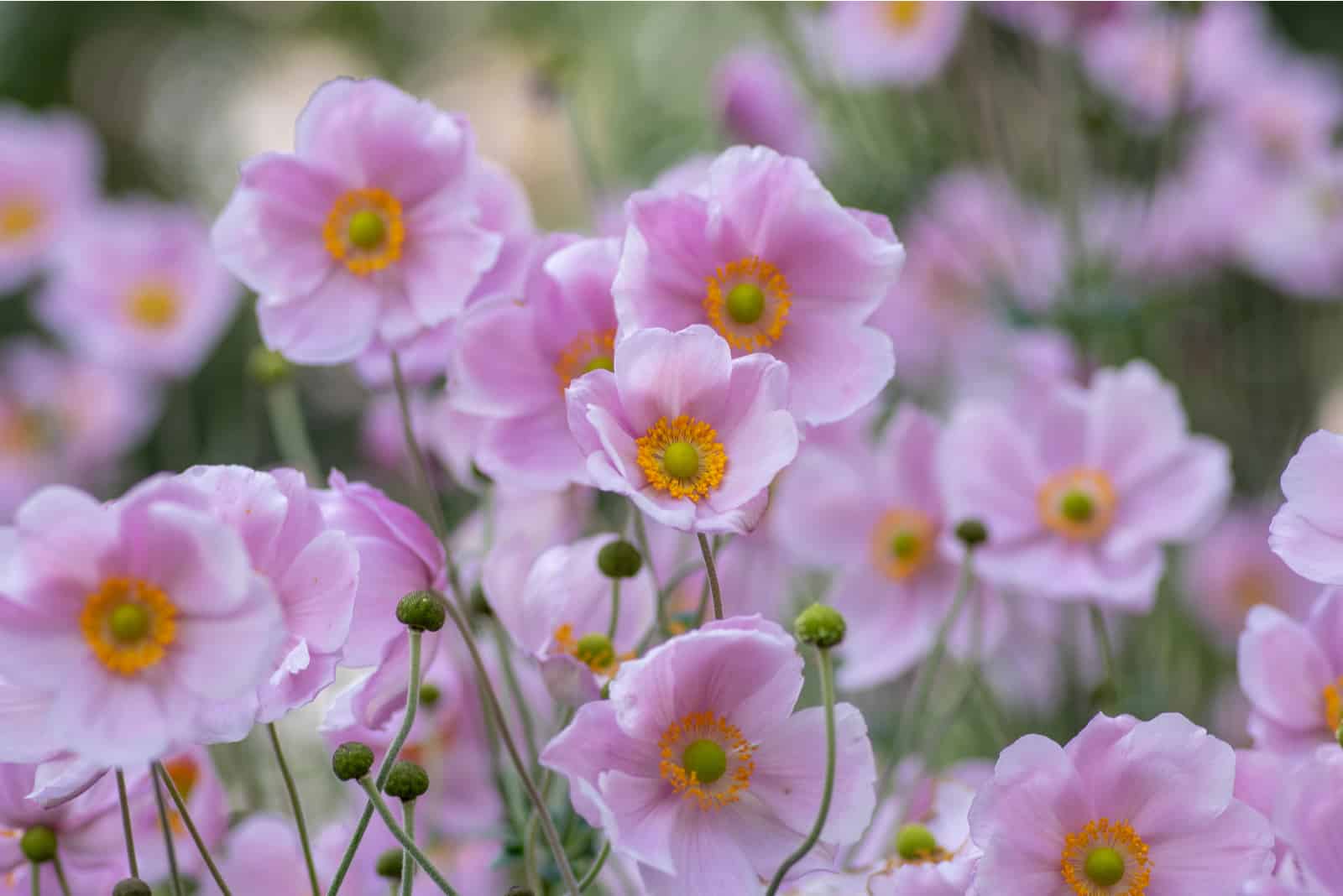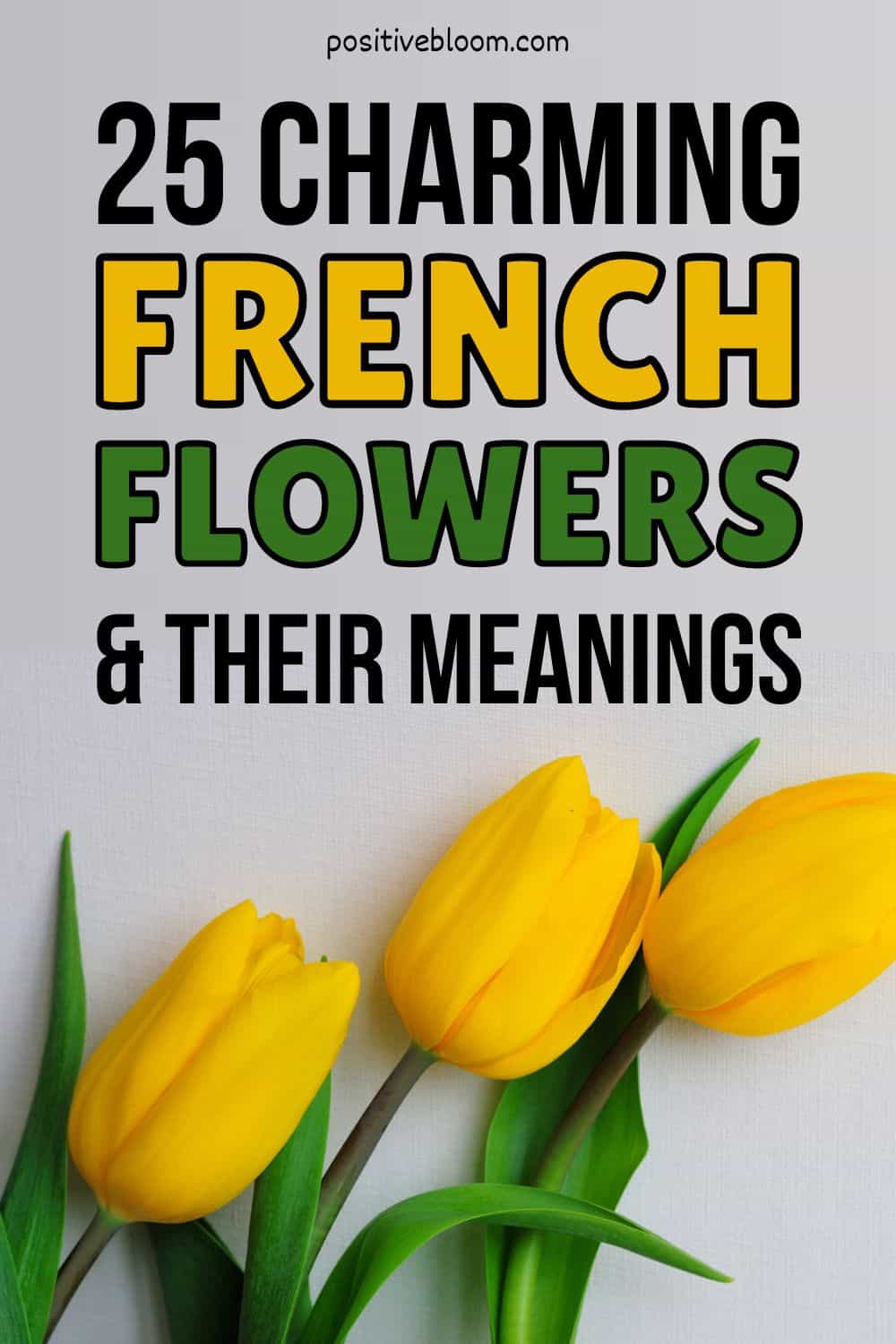One thing that every garden needs is a flower. Okay, probably not just one, but you get my point! If you really want that Provence kind of look, planting French flowers like lavender, red poppies, and peonies is the way to go.
This article contains information about 25 different varieties of flowers popular in France, including their French flower names. It will definitely help you get one step closer to your dream garden.
You’ll learn the basic characteristics and meanings of these flowers so you can decide which one will best adorn your patio or terrace.
25 French Flowers
There are many flowers popular in France, but we had to limit ourselves to just a few, so we picked 25 varieties that are definitely worth it.
This section brings you some of the most beautiful flowers you can admire in your garden or home. You can also choose which flower to plant based on its symbolism or simply its looks; there’s nothing wrong with that.
Let’s get started!
1. Azalea
Here is the basic info about azalea:
Scientific name: Rhododendron
French name: Azélie
Native habitat: China, Korea, and Japan
Growth rate: Slow grower
Size: 20 feet (6 m), but garden varieties reach heights between 4-6 feet (1.2-1.8 cm)
Toxicity: Toxic to cats and dogs
Azalea is a flowering shrub that flowers in spring and will decorate your garden with red, orange, yellow, purple, pink, and white flowers.
It needs fertile, well-draining soil, full sun (although it can tolerate partial shade), and about an inch (2.5 cm) of water per week during its growing season.
It is quite popular both in France and worldwide as it represents family and familial duty, but can also symbolize elegance, womanhood, feminine beauty, passion, and wealth. However, it has different meanings depending on the color of the blooms.
2. Carnation
The French name for carnation is œillet, which might be tougher to pronounce! However, we don’t need to know French in order to admire this beauty.
Here are the main specifics:
Scientific name: Dianthus caryophyllus
French name: Œillet
Native habitat: Mediterranean
Growth rate: slow grower
Size: 1-2.5 feet (30-75 cm) tall
Toxicity: Toxic to cats and dogs
Carnations can be found all over the globe, and I’m sure your inner florist is dying to have one in their garden. They are pretty popular in France, and you’ll find them on the list of Spanish flowers as well.
They come in scarlet, red, pink, white, and yellow, can be multicolored, and can last so long in a vase that you’ll wonder whether you truly cut away it from the rest of the plant!
They need plenty of sun, fertile planting substrate with good drainage, and should be watered once or twice a week when the top few inches of the soil are dry.
Depending on their color, they have many meanings and can symbolize strength, love, fascination, healing, protection, disappointment, purity, distinction, and more. Let’s just say you don’t want to give your fellow flower-symbolism enthusiast a yellow carnation!
3. Chrysanthemum
These are the general specifics of this colorful flower:
Scientific name: Chrysanthemum
French name: Chrysanthème
Native habitat: Northeastern Europe and East Asia
Growth rate: Fast grower
Size: 1-3 feet (30-90 cm) tall
Toxicity: Toxic to cats and dogs
Chrysanthemums are colorful flowers and they come in shades of white, lavender, purple, yellow, orange, and red, but can also be bicolored. Early bloomers show off their attire in late June, but early fall bloomers start parading in September, while October is all about late chrysanthemum bloomers.
They’re also known as mums and are relatively easy to grow. Plant them in a sunny, well-draining spot, and water them frequently throughout spring, summer, and fall, but suspend watering when the soil freezes in winter. Water them to a depth of 6-8 inches (15-20 cm), and you’re done.
In the USA, they represent happiness, well-being, and friendship, but in France they are a symbol of death. They are often seen at funerals as they symbolize immortality, and you’ll see flower shops brimming with them once All Saint’s Day approaches.
4. Dahlias
Dahlias come in many shapes and sizes and are an excellent material for breathtaking flower projects.
These are the main specifics:
Scientific name: Dahlia
French name: Dahlia
Native habitat: Higher altitudes of Central America and Mexico
Growth rate: Fast growers
Size: Most varieties are around 4-5 feet (1.2-1.5 m) tall
Toxicity: Toxic to cats and dogs
These magnificent flowers bloom from midsummer to fall, but if you find yourself in the south of France you’ll most likely see them in November or even December. Tiny pom poms or gigantic bouquet-worthy flowers can be bicolor, white, peach, yellow, orange, red, lavender, and pink.
Plant them in a sunny spot with loose and well-draining soil, and water them deeply once or twice a week or install a drip irrigation system that will keep them happy for you.
Dahlias represent love and involvement, which is probably why they are commonly paired with roses. They also signify wealth and elegance and were popularized in France when Empress Josephine started growing them.
5. French Daffodil
Daffodils are popular spring flowers you’ll see all around France in fields, countryside gardens, and even in front of the Eiffel Tower!
This is the basic information:
Scientific name: Narcissus
French name: Jonquille
Native habitat: Northern Europe
Growth rate: Fast growers
Size: 2-24 inches (5-60 cm) tall stems, depending on the species
Toxicity: Toxic
It is unfortunate that almost all beautiful flowers are toxic, but that doesn’t stop us from growing daffodils and making fantastic flower arrangements.
They are one of the earliest blooming flowers and can light up your home with their sun-yellow petals and orange trumpets. The petals can also be white and the trumpets vary between pink, orange, and yellow, which can be soothingly pastel or gorgeously intense.
These flowers need plenty of sun to bloom, and like many other plants, the soil needs to be well-draining. You should water them frequently when blooming, but then stop when the plant enters dormancy. You can also fertilize them with fish emulsion in spring, but they do just fine without it.
These yellow flowers are a sign of hope in France as they represent rebirth and new beginnings.
6. French Hyacinth
Hyacinths may look like a rattlesnake’s tail, but they aren’t so frightening!
Below you will find some general information about hyacinths.
Scientific name: Hyacinthus
French name: Jacinthe
Native habitat: The Eastern Mediterranean
Growth rate: Fast grower
Size: Approximately 10 inches (25 cm) tall and 4-6 inches (10-15 cm) wide
Toxicity: Toxic
Hyacinth is toxic to both cats and dogs, but you can still enjoy it in your countryside home. It blooms in spring and its slender stems bear light blue, pink, or white star-like flowers.
They need full sun, water when the top 3 inches (7.5 cm) of the soil feel dry, and a medium with good drainage to thrive. You can also give it some additional nutrients and add compost or organic fertilizer to enjoy little pink stars in late spring.
Hyacinths are flowers of the Greek god Apollo, and just like him they represent peace, beauty, and commitment, but can also be a symbol of pride and power. Yellow hyacinths usually symbolize jealousy, whereas blue ones signify sincerity.
7. French Lavender
Lavender is one of the most noteworthy flowers in the world. Its fragrance is enchanting and there are many uses for its delicate branches.
These are the general specifics about French lavender.
Scientific name: Lavandula dentata
French name: Lavande de Provence
Native habitat: The Mediterranean, the Arabian peninsula, and the Atlantic islands
Growth rate: Fast grower
Size: 3 feet (90 cm) tall
Toxicity: Toxic to cats and dogs
Knowing when lavender blooms is always helpful for whatever species you decide to grow. French lavender blooms in early spring, and its flowers can adorn your home the entire year if you take good care of the plant.
It requires plenty of sunlight and a sandy planting medium to flourish. Lavender is quite drought-tolerant, so you can water it every two weeks during its growing season. Finally, lavender cannot tolerate humidity, so you should grow it indoors if you live in a region with plenty of precipitation.
Lavender represents silence, purity, devotion, grace, serenity, and calmness. It is also the symbol of Provence and personifies innocence and healing, an ideal plant to turn to for a relaxing day.
8. French Lilac
Lilac is a fragrant, spring-flowering bush; essential if you live in a cottage.
Here’s the main info:
Scientific name: Syringa vulgaris
French name: Lilas
Native habitat: The Balkans
Growth rate: Medium growth rate
Size: 8-15 feet (2.4-4.5 m) when mature
Toxicity: Non-toxic
French lilac cut flowers will decorate your house for two weeks if you tend to their vase-life needs, and they come in many different colors: periwinkle-blue, lavender, mauve, white, and pink. The blooms appear in spring and spread their fragrance far and wide.
Plant it in a sunny spot and water it twice a week. It won’t bloom if you over-fertilize it, so using organic fertilizer or compost is the best option. Finally, you should prune it after it blooms, and, of course, well-draining soil is a must-have.
Lilacs are one of the earliest blooming flowers, so it signifies renewal and spring, but they can also signify confidence, which makes them a great gift for a friend who has just graduated.
9. French Marigold
This vividly-colored flower is what every countryside garden needs!
These are the basic specifics:
Scientific name: Tagetes patula
French name: Souci
Native habitat: Central America and Mexico
Growth rate: Fast-growing
Size: 6-12 inches (15-30 cm) tall
Toxicity: Toxic to pets
The voluptuous beauty of this flower is expressed through its yellow, orange, and red flower heads that open in early spring and bloom until the first frost.
Scorching summer days cannot hurt it and it thrives in full sun. The soil should be moderately fertile with good drainage, and you should give it a good soak once a week.
They symbolize passion and creativity, but can also signify grief, sorrow, despair, and jealousy, so they’re not the best flowers for weddings. However, you can always fill a vase and make it a centerpiece in your living room because they are simply stunning.
10. Gardenia
Gardenias are lovely shrubs with stunning white flowers.
This is the general information about it:
Scientific name: Gardenia jasminoides
French name: Gardénia
Native habitat: Southeast Asia
Growth rate: Moderate growth rate
Size: Average height is 4-5 feet (1.-1.5 m), but there are taller cultivars
Toxicity: Toxic to pets (but not deadly)
This bush blooms from late spring to early summer and will decorate your garden with white, ivory, or cream blossoms. There are some great books about flowers that can help you decorate and make the most charming flower arrangements, and what better flower than a gardenia to help you with that?
The Gardenia thrives in full sun, but it can benefit from light shade when the summer heat becomes more intense. The soil should be fertile and well-draining, but also be able to retain some moisture. Finally, the plant needs around an inch (2.5 cm) of water a week, and if it can’t get it from the rain you should water it.
The Gardenia’s white petals symbolize gentleness and purity, as well as innocence, sincerity, and modesty. These meanings can help you express yourself in more ways than just words and be a secret language between you and your fellow florist.
11. Geranium
Geraniums are quite popular as bedding plants, but it’s not uncommon to see them in hanging baskets on terraces.
These are the main facts about this flower:
Scientific name: Geranium
French name: Géranium
Native habitat: Subtropical southern parts of Africa
Growth rate: Slow-growing
Size: 4-48 inches (10-120 cm) tall
Toxicity: Non-toxic
Geraniums are also called pelargoniums and crane’s-bill. They start blooming in spring and can last until fall. They are usually white, pink, purple, orange, or red, and sometimes look like a four-leaf clover.
They need 4-6 hours of direct light, or even more if the light is filtered. The soil should be nutrient-rich and loose to avoid overwatering. Speaking of watering, you should wait until the top 1/2 inch (1.25 cm) is dry before doing so.
Nowadays, geraniums symbolize happiness, good wishes, friendship, and good health. Still, in the Victorian era, they were a symbol of foolishness and stupidity, so not a flower you’d expect to get from your suitor!
12. Gerbera Daisy
The Gerbera daisy is another flower you’ll often see in France. Sometimes they are so vibrant that you begin to wonder whether they’re real!
Here’s the main info:
Scientific name: Gerbera jamesonii
French name: Gerbera de Jameson
Native habitat: South Africa
Growth rate: Moderate growth rate
Size: 6-18 inches (15-45 cm) tall
Toxicity: Non-toxic
Gerbera daisies come in many different colors, so it’s no wonder that the French adore them. You can see them adorning gardens from late spring until fall with their white, salmon, pink, lavender, yellow, orange, and red colors. At the same time, some gardeners take it to another level and grow only bicolor varieties.
They flourish in full sun, but they cannot tolerate the hot summer months so you should give them some shade in the afternoon. Fertile, well-draining substrate and an inch (2.5 cm) of water a week are everything this flower requires.
They signify beauty, innocence, and purity, but their vivid colors personify rejuvenation and energy, so it’s a great choice to give to your friends or family.
13. Gladiolus
Gladiolus is sometimes called the sword lily thanks to its appearance. The French love it, and we’ve seen it more than once when strolling down the alleys of Paris.
This is the basic information:
Scientific name: Gladiolus
French name: Glaïeul
Native habitat: Africa and Europe
Growth rate: Slow-growing
Size: 2-5 feet (60-150 cm) tall
Toxicity: Toxic to cats and dogs
Gladioli flower from July until the frost kills them, and they can decorate your front yard with whichever color you like, be it white, pink, rose, lavender, purple, burgundy, yellow, or green.
They need full sun to reach their full potential, and well-draining, sandy-loam soil is essential. An inch (2.5 cm) of water through rain or irrigation is required each week. Before planting, you should add some compost to get the most vibrant blooms.
The Gladiolus represents character strength, sincerity, and love at first sight. So, if a Frenchman gives you a bouquet of these alluring flowers, you know what it means…
14. Gourdon Flowers
These wildflowers are a common sight in Paris, but you probably know them as Rainer’s bellflower.
Let’s look into some more details about them:
Scientific name: Campanula raineri
French name: Gourdon
Native habitat: Italian and Swiss Alps
Growth rate: Slow grower
Size: 2-3 inches (5-7.5 cm) tall and approximately 8 inches (20 cm) wide
Toxicity: Non-toxic
You cannot escape the trailing, lavender-blue bells of Gourdon flowers in French spring and summer, nor should you want to as they are quite beautiful!
If you want these flowers to decorate your home garden, you should plant them in a sunny spot and loamy and sandy soil with good drainage. The soil should be moist, so you need to water the plant regularly.
They symbolize humility and penitent piety in Christianity due to st. Dominic, who taught devotion and penance. He abandoned all luxuries, such as shoes, beds, and often food, and he even wore punishing fabrics. Gourdon flowers hang facing down, which is probably why they are a symbol of humility.
15. Hydrangea
Hydrangea, or hortensia, is a popular French flower, and gardeners grow it all over France, especially in Brittany and Normandy. You can see it being sold in many flower shops or grown in pots in French households.
Below you can read some basic information about hortensia:
Scientific name: Hydrangea
French name: Hortense
Native habitat: Asia and the Americas
Growth rate: Fast growth rate
Size: Some species are 2-3 feet (60-90 cm) tall, whereas others reach a height of 6 feet (1.8 m)
Toxicity: Toxic to cats, dogs, and horses
Hydrangeas flower from mid-spring to late summer or even fall, and they produce pink or blue flowers in all shades of lavender, violet, and purple, and some can even be green and white. Colors can be vibrant or pastel, and more than one color can adorn one flower head.
They thrive in partial shade, so plant them somewhere they can get direct sun in the morning but will be protected from the midday sun. The soil should be fertile, well-draining, and moist, so you should ensure this plant gets an inch (2.5 cm) of water a week during the growing season, whether through rain or irrigation.
Hydrangea symbolizes beauty, grace, and gratitude, but it was also a symbol of arrogance and boastfulness in Europe. However, different colors of flowers have different meanings and blue hortensias symbolize apology and rigidity, whereas pink ones represent heartfelt emotion.
16. Lily Of The Valley
Lily of the valley has an important place in French history, and it was given as a gift for centuries. It all started when King Charles IX was delivered a spring of these tiny bells and liked them so much that he started the tradition.
This is the general info about this flower:
Scientific name: Convallaria majalis
French name: Muguet
Native habitat: Eurasia and eastern parts of North America
Growth rate: Fast grower
Size: 6-12 inches (15-30 cm) tall
Toxicity: Toxic
Even though the shape of this lily is not the one on the emblem called fleur-de-lis (otherwise known as the lily flower), it is still grown in many parts of France.
It blossoms in early to mid-spring, and its bell-shaped pink or white flowers last for three or four weeks.
It prefers partial shade, but it can adapt to full shade or full sun depending on the moisture. The medium should be well-draining and moist, but the watering frequency depends on the amount of sunlight it receives.
Due to the tradition started by King Charles IX, lilies of the valley are seen as a symbol of good luck for the upcoming year in France and are commonly given to family members on Labor Day (Fête du Muguet).
17. Nasturtium
This easy-to-grow flower cheers everyone up with its vibrant petals, which I guess is why the French grow it so widely.
Here you can read about its general specifics:
Scientific name: Tropaeolum
French name: Capucine
Native habitat: Central and South America, from Chile to Mexico
Growth rate: Fast-growing
Size: 1-10 feet (30 cm- 3 m) tall, and 1-3 feet (30-90 cm) wide
Toxicity: Non-toxic to pets
This flower can hit it off with many different plants and attracts good insects that are natural enemies to pests such as aphids, so it’s helpful to know more about nasturtium companion plants.
Nasturtium blooms in spring, summer, and fall and will decorate your vegetable garden with white, pink, yellow, orange, and red flowers.
It can tolerate partial shade, but the blooms won’t be as nearly as attractive if they aren’t grown in full sun. It needs free-draining soil that isn’t too fertile, as that will only lead to more greenery that will bury the flowers. Finally, water it once or twice a week when you notice that the topsoil is dry.
Nasturtium generally symbolizes victory in conquest. Still, different colors have different meanings: red represents passion, strength, and courage, whereas a yellow nasturtium signifies elation, joy, and happiness.
18. Orchid
Orchids are flowers that everyone loves, not just the French, and you’ll find quite a few among popular Italian flower varieties . They draw your gaze upon themselves and you have a hard time looking away!
Here’s the main info:
Scientific name: Orchidaceae
French name: Orchidée
Native habitat: Tropical regions of Asia and Australia
Growth rate: Slow grower
Size: 8-36 inches (20-90 cm) tall and 12 inches (30 cm) wide, depending on the variety
Toxicity: Non-toxic
Most orchids bloom from fall to spring depending on the species, and they can be white, pink, purple, blue, green, yellow, orange, or red.
Orchids need plenty of indirect light, so it would be ideal if you give them 12-14 hours of sunlight a day. Use orchid potting mix and change it once a year to replenish the nutrients and provide enough aeration. Water your orchid once a week in winter and twice a week when the temperatures increase.
Orchids generally symbolize beauty, strength, love, and luxury. Still, in ancient Greece they represented masculinity, and it was a common belief that if a father of an unborn baby ate a large, new tuber, the child would be a boy.
19. Pansy
Pansies are multicolored plants that no gardener can turn a blind eye to.
These are its specifics:
Scientific name: Viola x wittrockiana
French name: Pensée
Native habitat: Europe, but the cultivation began in Iver, England
Growth rate: Fast grower
Size: 6-12 inches (15-30 cm) tall
Toxicity: Non-toxic to dogs, mildly toxic to cats
Pansies usually bloom when the temperatures aren’t scorching, so in spring to early summer and fall, depending on the variety. They are multicolored, and their main colors vary between white, apricot, pink, lavender, purple, blue, yellow, orange, red, bronze, mahogany, and black.
It’s good to have a choice, right?
They like full or partial sun, but generally need cooler temperatures to produce the best flowers. The soil should be fertile and you should give it an inch (2.5 cm) of water a week during the growing season and regularly deadhead it to increase flowering.
Pansies are symbols of love, both romantic and platonic, so unfortunately you won’t know for sure whether it was an expression of love or just a sign of endearment.
20. Peony
Peonies are those shrubs that look like roses, but you see the difference as soon as you come closer by. However, the French love them, and so do we!
Let’s examine its general specifics:
Scientific name: Paeonia
French name: Pivoine
Native habitat: Europe, Asia, and the western part of North America
Growth rate: Slow-growing
Size: Usually around 3 feet (90 cm) tall and wide
Toxicity: Toxic to humans and pets
Peonies will give that finishing touch to your living room you’ve been looking for, and they bloom from late spring to early summer so you’ll have a few weeks to enjoy their blush pink, bright red, stark white, or cream blooms.
They need full sun to thrive, and you should plant them in a well-draining substrate rich in nutrients and organic content. Don’t allow the soil to become soggy and only give them 1 inch (2.5 cm) of water per week.
This is another flower that symbolizes love and romance, but some additional meanings include honor, wealth, happiness, and beauty. They are also a symbol of shyness, and the French even have a saying: “Être rouge comme une pivoine,” which translates to “be red like a peony”.
21. Red Poppy
Poppies always put a smile on our faces when we see them standing tall in wheat fields.
These are the specifics:
Scientific name: Papaver rhoeas
French name: Coquelicot
Native habitat: North Africa and Eurasia
Growth rate: Fast-growing
Size: 12-14 inches (30-35 cm) tall
Toxicity: Toxic
Red poppies flourish in cooler conditions and usually show their royal petals between April and June.
They thrive in full sun and moist, well-draining mediums. This flower variety doesn’t require too much water, and if you live in a region that gets plenty of rain throughout the year you don’t need to water it at all. However, if your region is arid you should give it some water from time to time.
Poppies are a sign of remembrance of fallen soldiers and a symbol of war. However, they remind us of life and its beauty among the destruction and devastation of war.
22. Sunflower
Common sunflowers bring the sun into your home, and they’re pretty popular in Provence, where their season reaches its peak in early-to-mid July, in case you want to check it out!
Here are the main specifics:
Scientific name: Helianthus annuus
French name: Tournesol
Native habitat: Southern and central USA and Mexico
Growth rate: Fast-growing
Size: Approximately 3-15 feet (0.9-4.5 m) tall
Toxicity: Non-toxic
Sunflowers bloom during summer and fall, and their yellow crown has been an inspiration to many artists, especially Van Gogh.
They need full sun to flourish, an inch (2.5 cm) of water a week if there’s no precipitation, and fertile, loamy soil. If you want to grow sunflowers with the most majestic heads, you should fertilize them or add some compost, so it’s good to know whether sunflowers like coffee grounds, eggshells, etc.
Thanks to the myth of Clytie and Apollo, sunflowers are seen as a symbol of adoration and loyalty. Also, because of their connection with the sun, we perceive them as happy flowers, so it’s not surprising that the French (and many other cultures) love growing them.
23. Tulips
When we think of tulips, we immediately associate them with the Netherlands, but they are fairly popular in France as well.
Let’s look into their main specifics:
Scientific name: Tulipa
French name: Tulipe
Native habitat: Central Asia
Growth rate: Fast-growers at first, but then their growth rate slows down
Size: 12-16 inches (30-40 cm) tall
Toxicity: Toxic
There are early and mid-season tulips. Early tulips show their gorgeous flowers in March and April, whereas the blooming of mid-season varieties extends late into spring so we plant both of them to enjoy their white, yellow, light yellow cream, orange, red, and pink petals a bit longer.
They need at least six hours of direct sunlight each day for the best-looking flowers. Also, they need a well-draining medium like sandy soil amended with organic matter. Finally, they need 2/3 of an inch (17 mm) of water each week, and if there’s rain you shouldn’t water them as it can lead to the rotting of the bulb.
Tulips symbolize perfect love, so it’s no wonder that there are so many inspirational quotes about tulips. Red tulips personify true love, whereas purple ones signify royalty.
24. Yellow Iris
Even though the national flower of France bears the name “fleur-de-lys”, many historians believe that it’s actually an iris that’s depicted, not a lily.
Here’s the basic information:
Scientific name: Iris pseudacorus
French name: Iris faux acore, Iris jaune, and Flambe d’eau
Native habitat: Europe, North Africa, and Western Asia
Growth rate: Moderate growth rate
Size: 3 feet (90 cm) tall
Toxicity: Toxic
Yellow iris blooms from April to June and the petals look like small, yellow swords.
They thrive in full sun or partial shade if the temperatures are extremely hot, and prefer moist and humus-rich substrates. If you grow this flower in full sun you should give it more water, and if it’s grown in the partial shade you should water it less.
Unlike other yellow flowers that represent either cowardice, disappointment, or rejection, yellow irises symbolize passion, so they’re an excellent gift for your loved one.
25. Windflower
The last popular French flower is the windflower, and even though it looks simple, I’m sure it would transform the look of your lawn!
These are the specifics:
Scientific name: Anemone
French name: Anémone
Native habitat: Subtropical and temperate parts of all continents, excluding Australia and Antarctica
Growth rate: Moderate to slow growth rate
Size: 6-48 inches (15-120 cm) tall and 2-3 feet tall (60-90 cm), depending on the variety
Toxicity: Toxic
They usually bloom in winter and early spring, and the white, ivory, yellow-green, blue, orange, red, purple-red, and pink blooms last four to six weeks.
They grow best in partial shade and a well-draining, nutrient-rich, and moist soil. You should water them deeply after planting with a slow flow of water so that it can reach the tubers, and then stop watering until the buds appear in spring. After that, add an inch (2.5 cm) of water per week if there’s no rain.
Greek mythology uses wildflowers to signify the coming of spring breezes and the death of a loved one, whereas Victorians associate it with a forsaken love. What it symbolizes is heartbreaking, but it can still spruce up your garden.
Final Thoughts
This article brought you some of the most popular French flowers, and you could encounter any of them when strolling through Paris or Provence.
We also included their French names, which might be a bit difficult to pronounce but will connect you to the locals nonetheless.
We also brought you the hidden meanings behind these amazing flowers so the next time you’re visiting a friend or a loved one, you know exactly which one to bring.Enjoy these alluring flowers, and until next time!
Like this post? Share or pin it for later!

